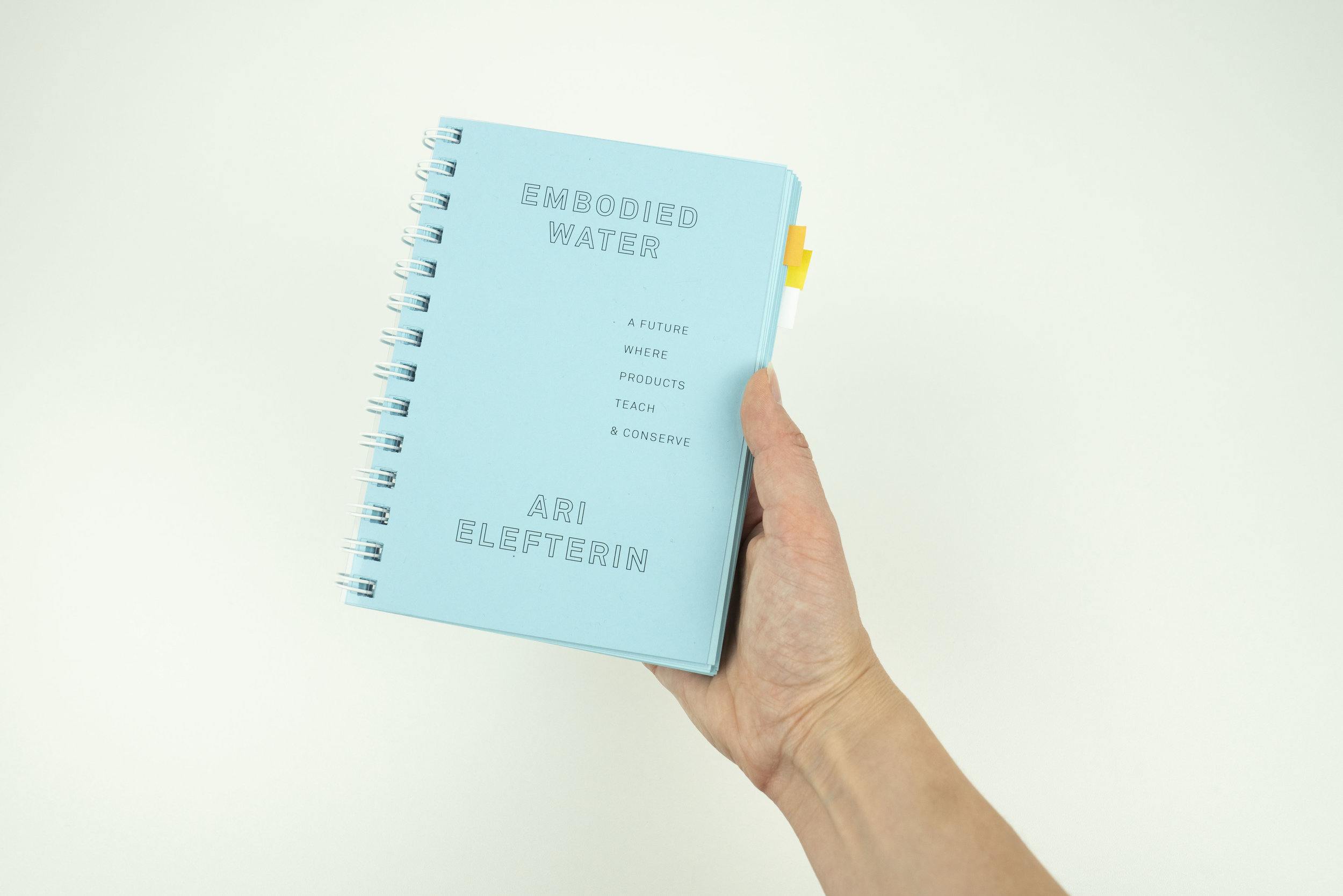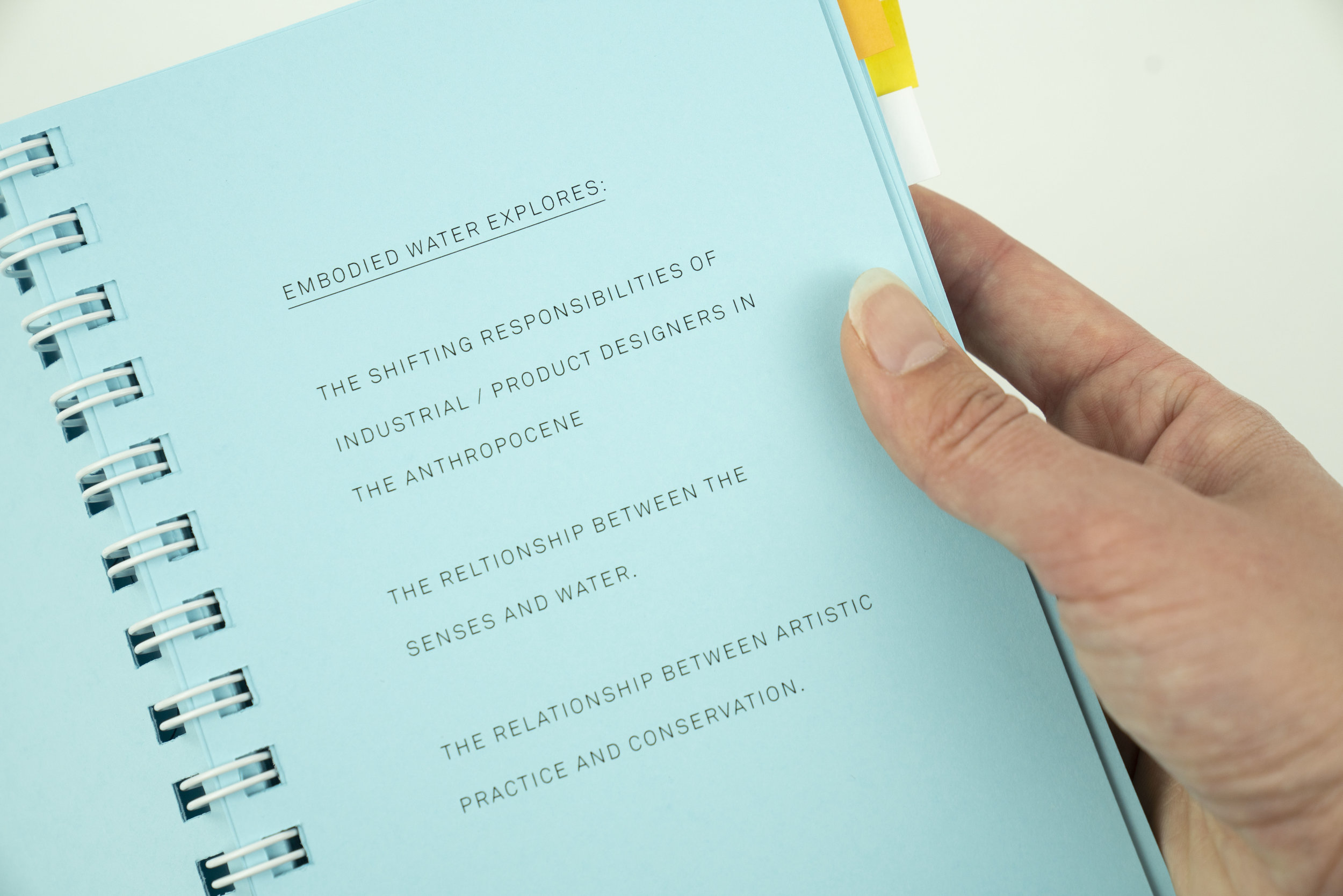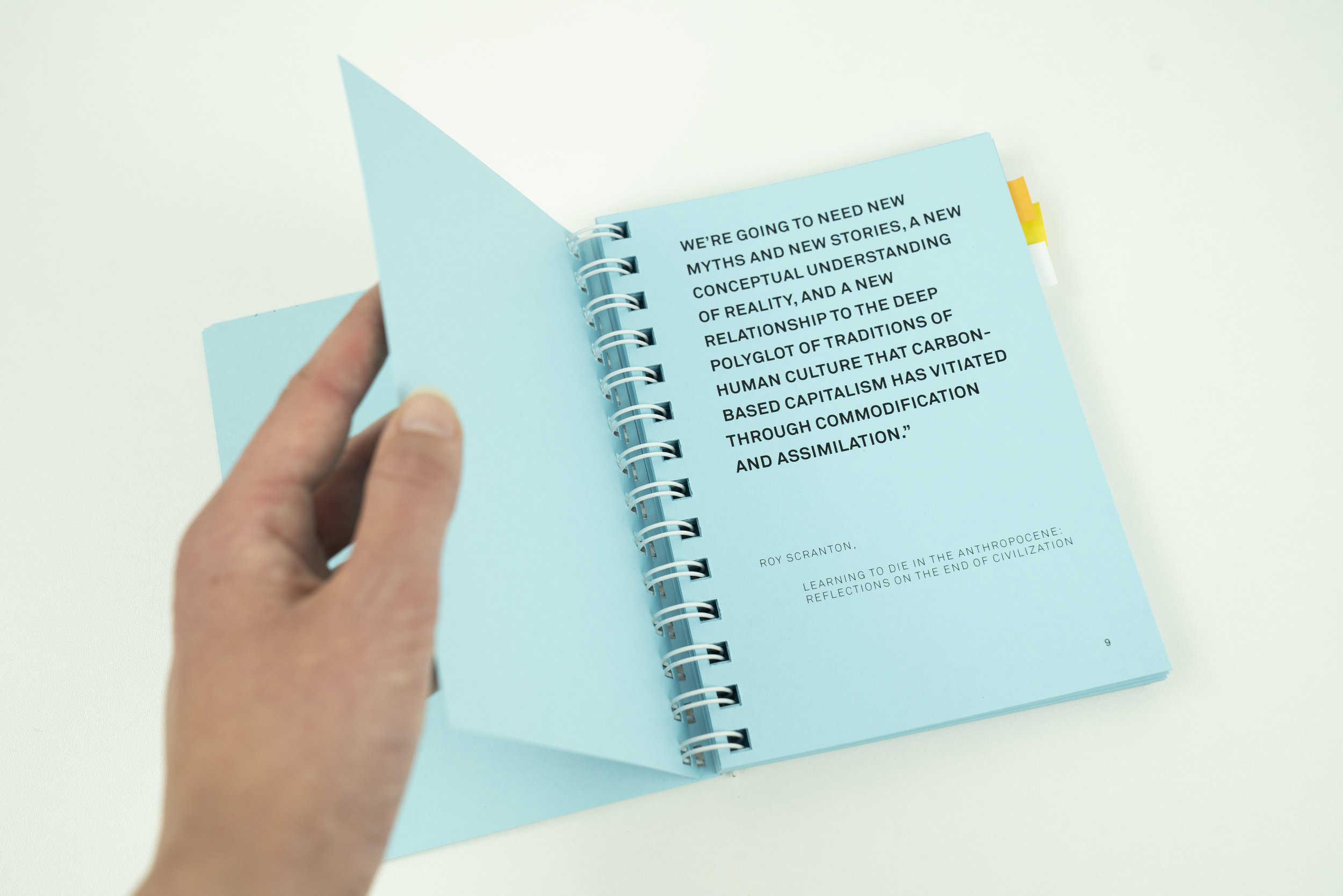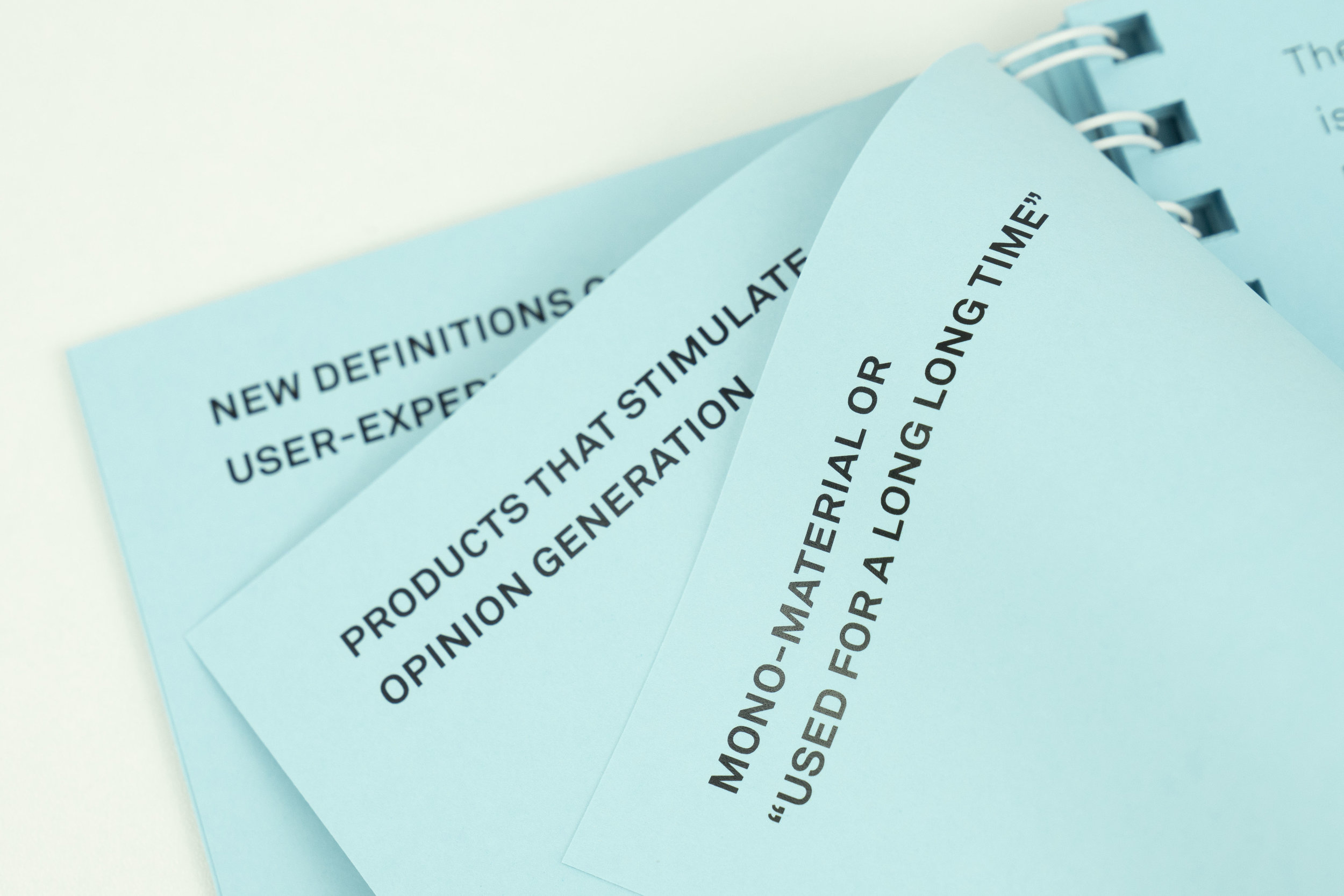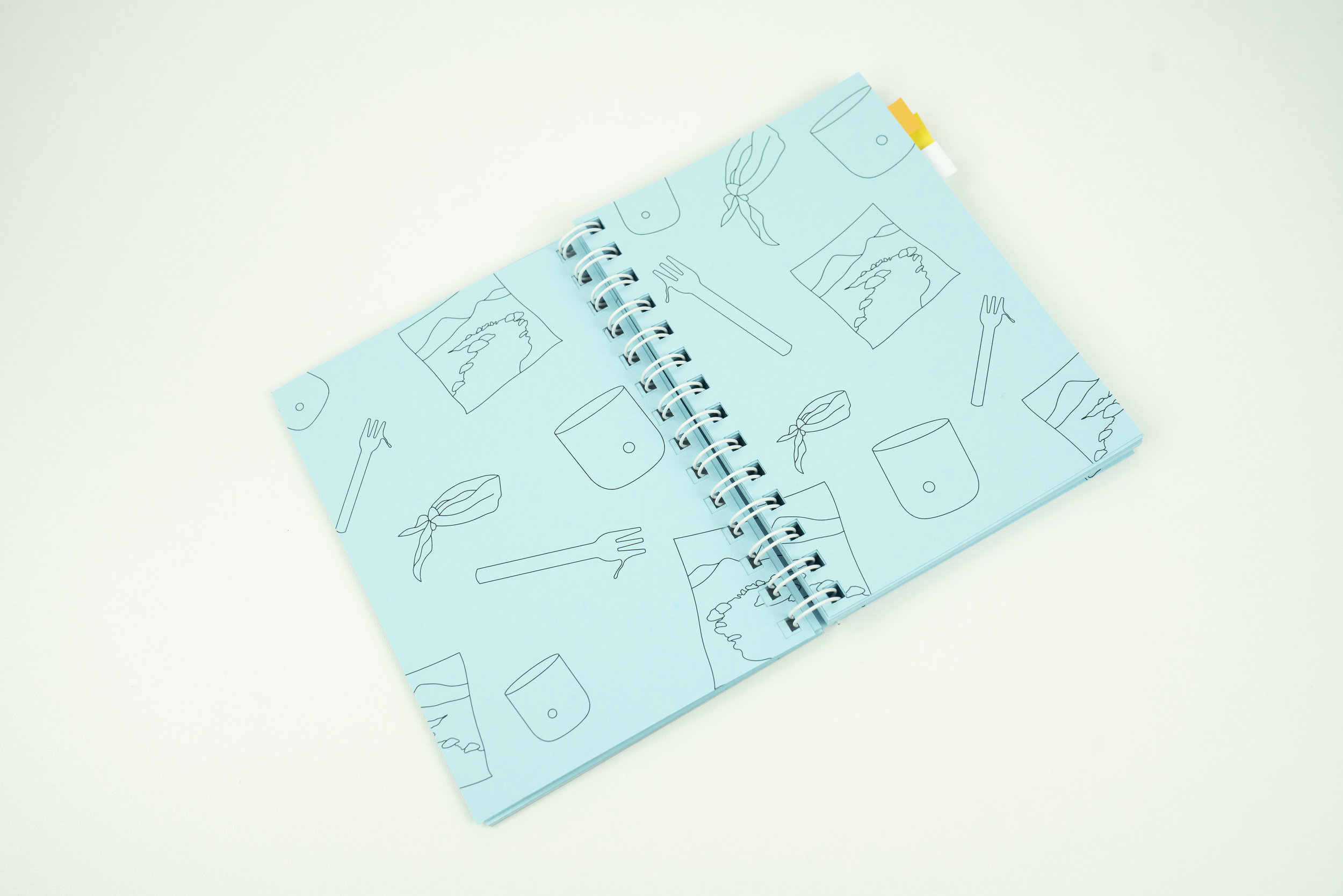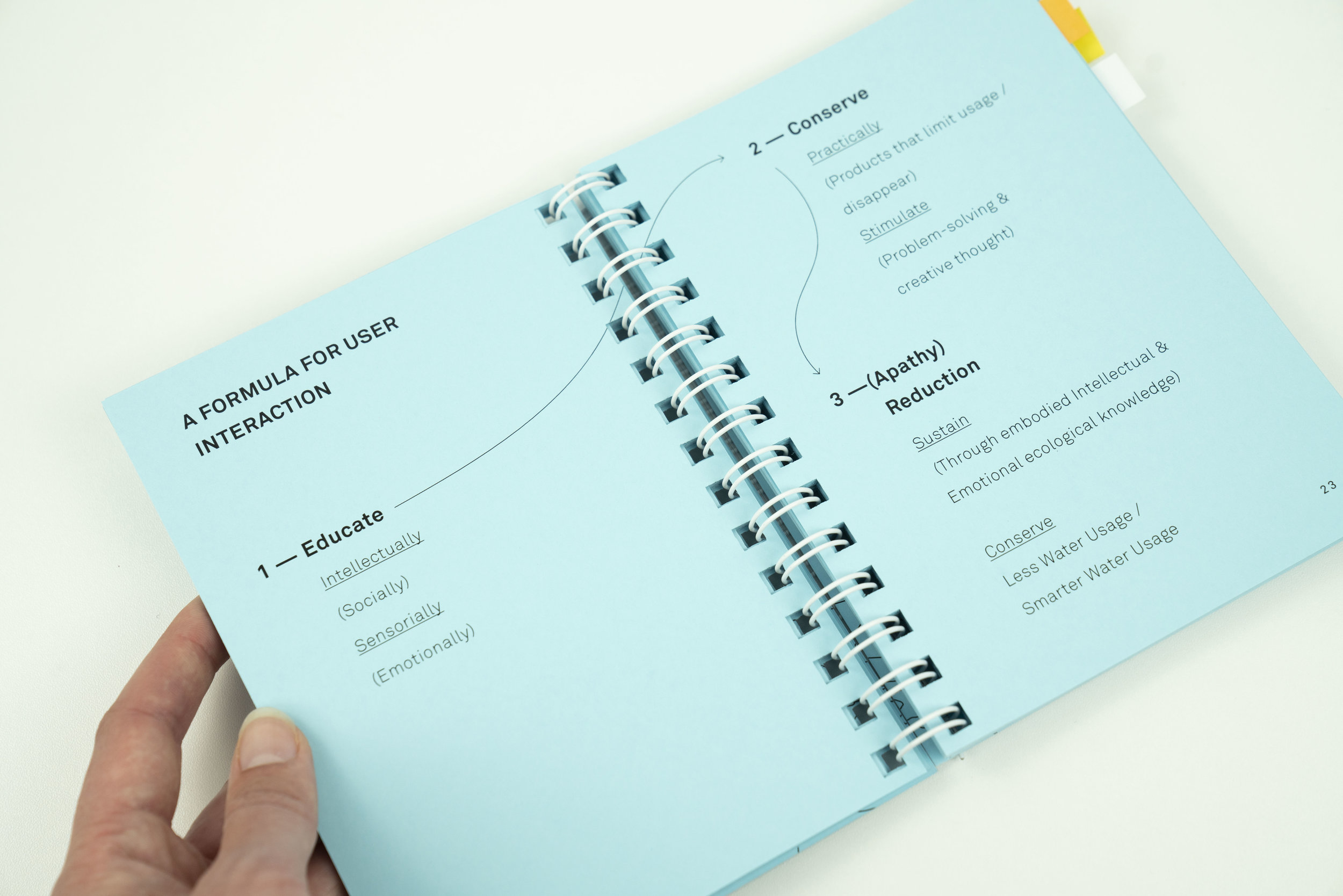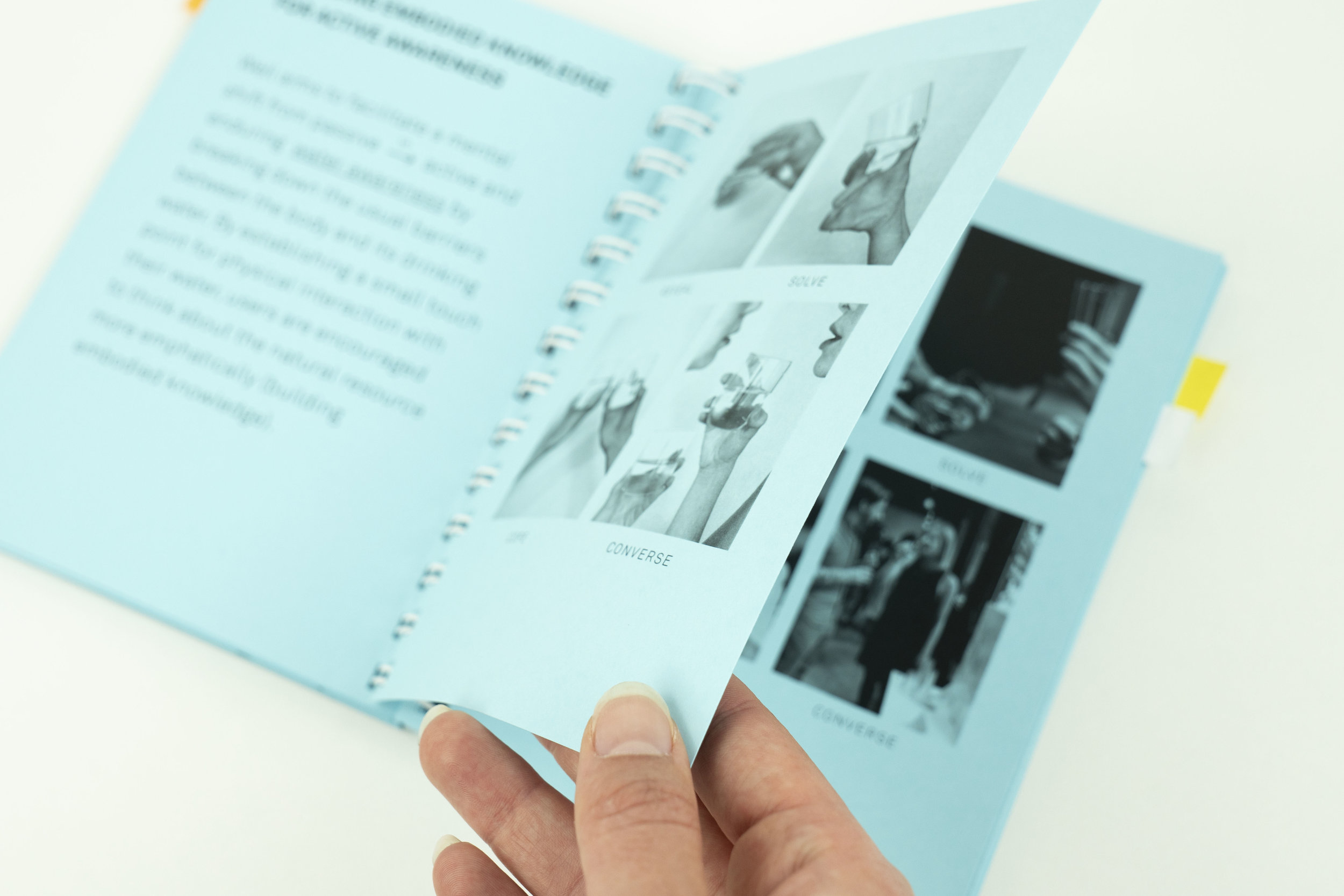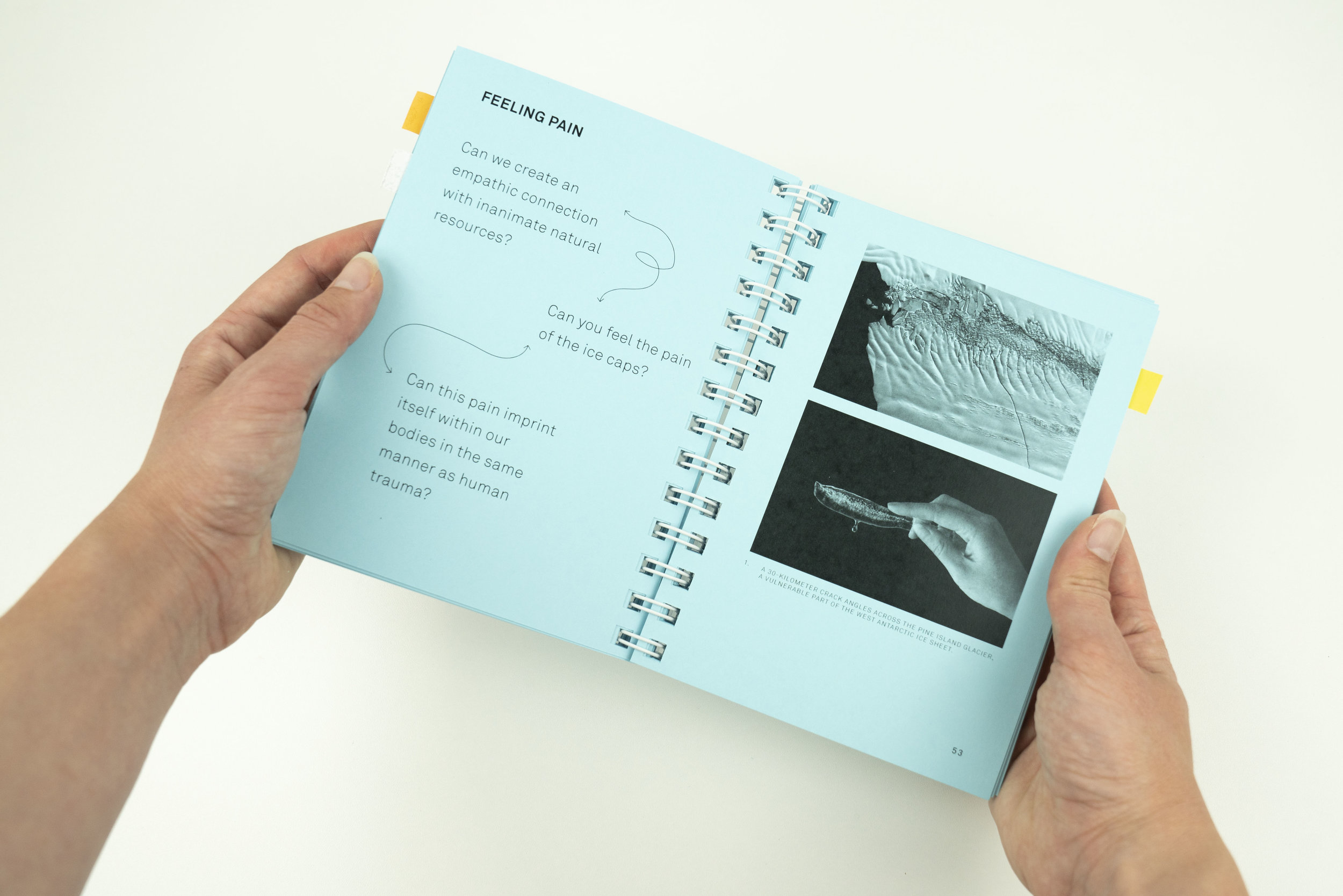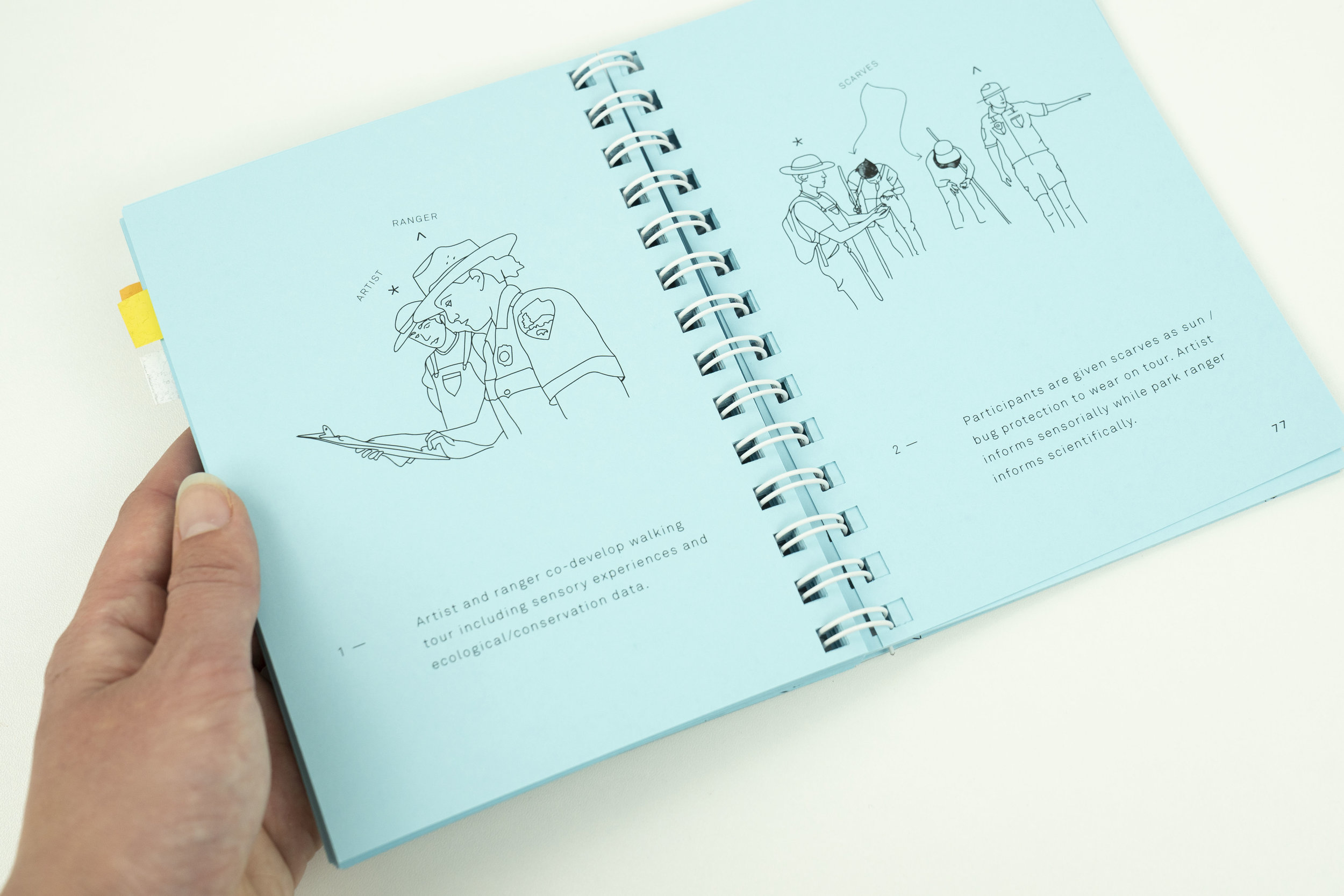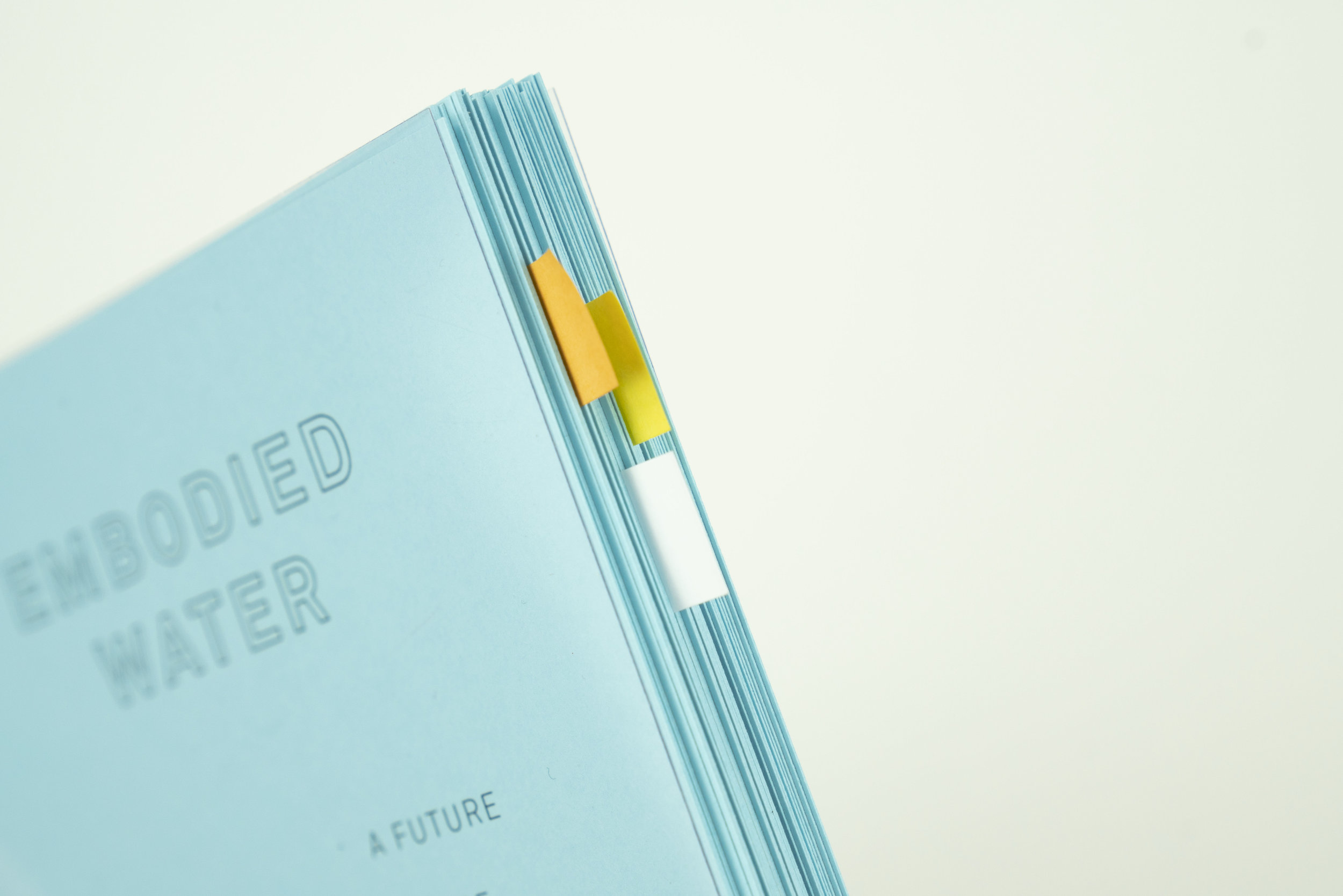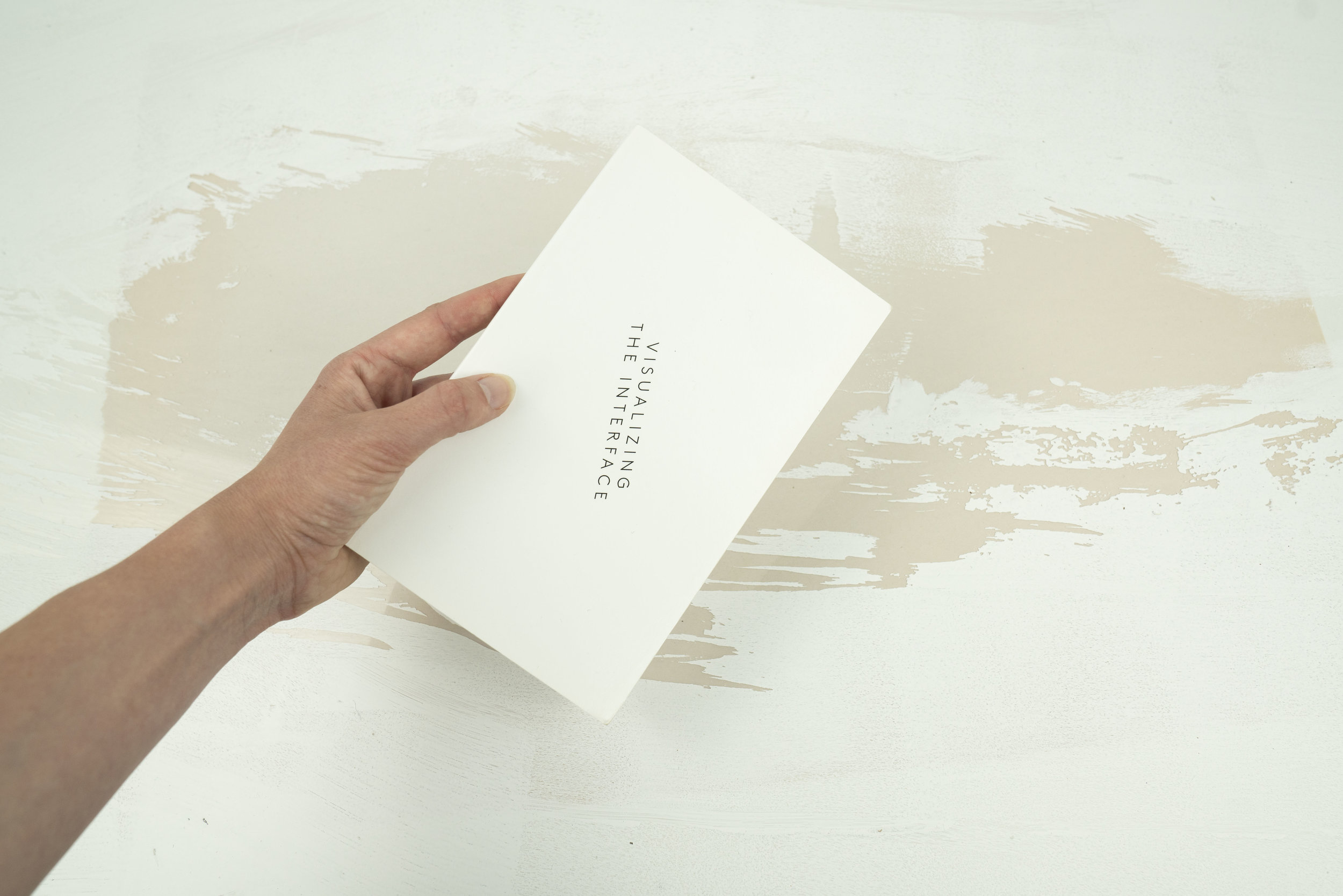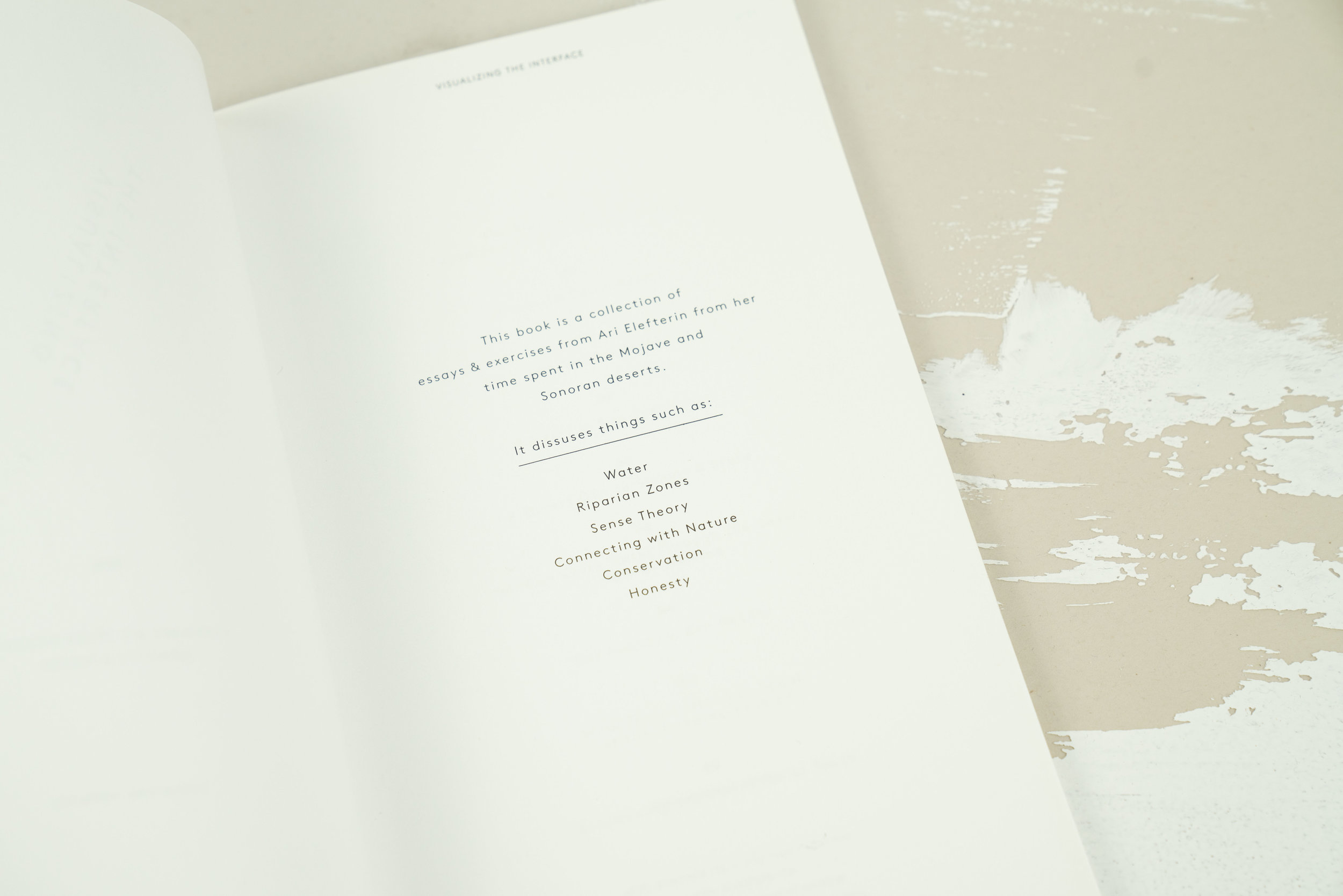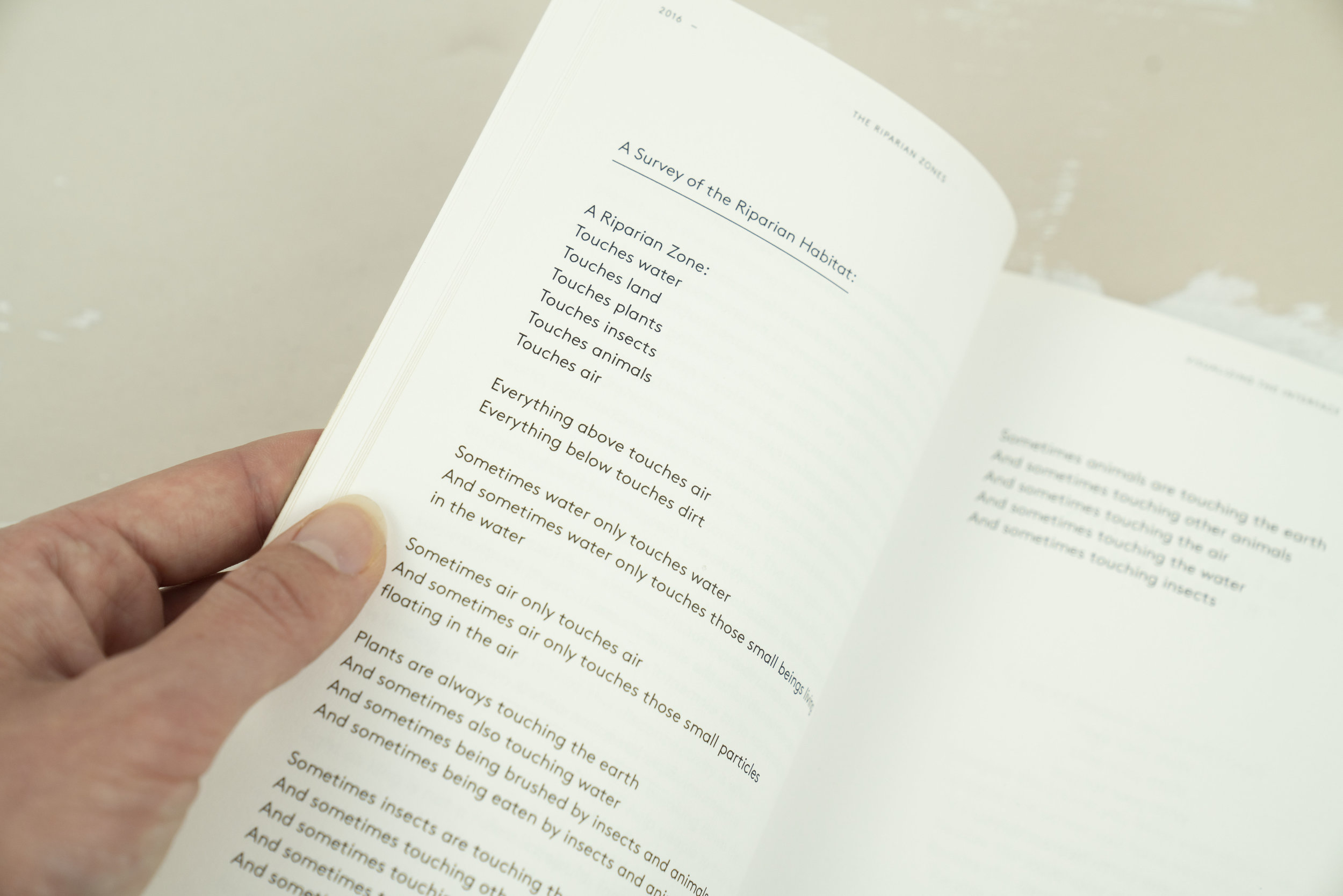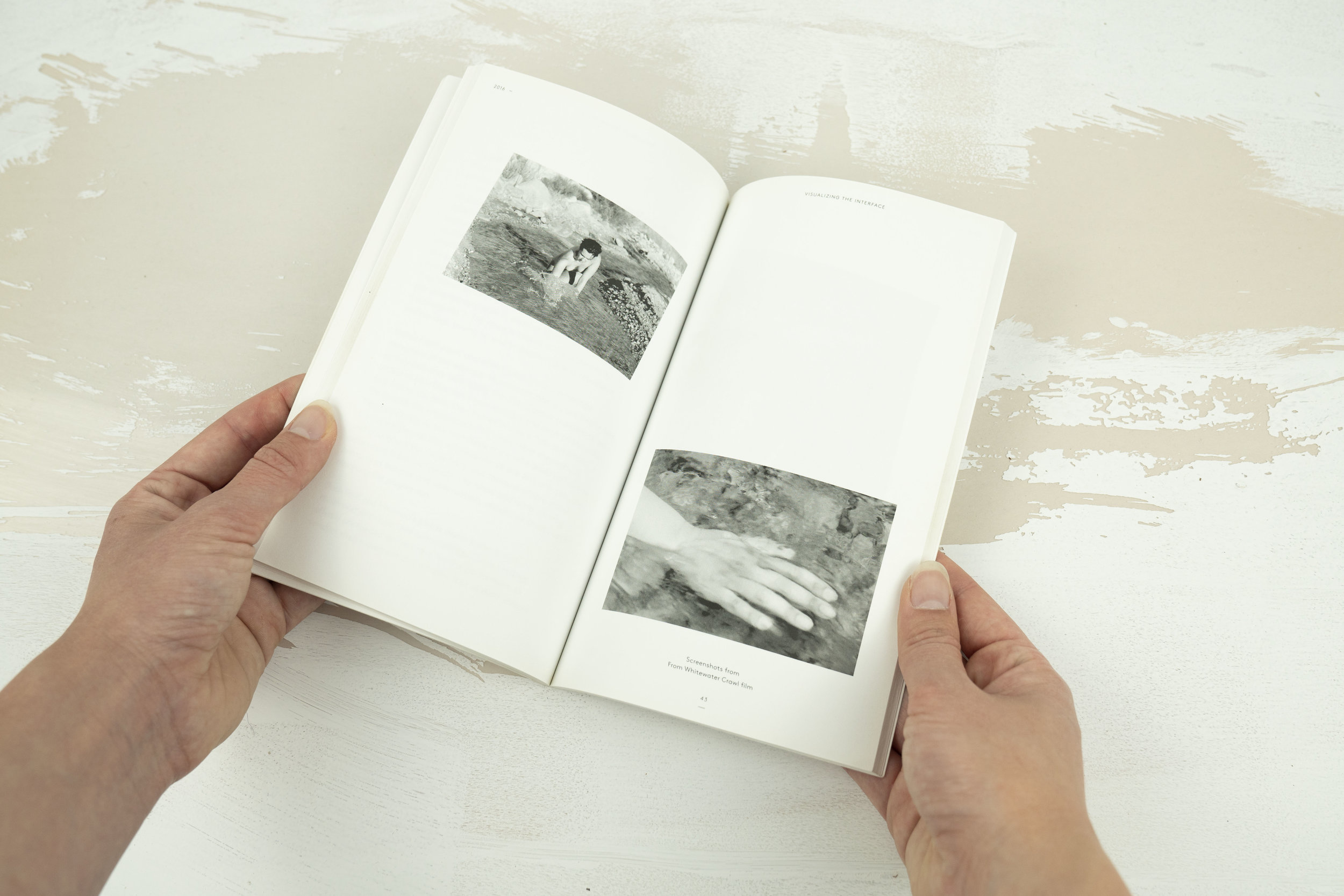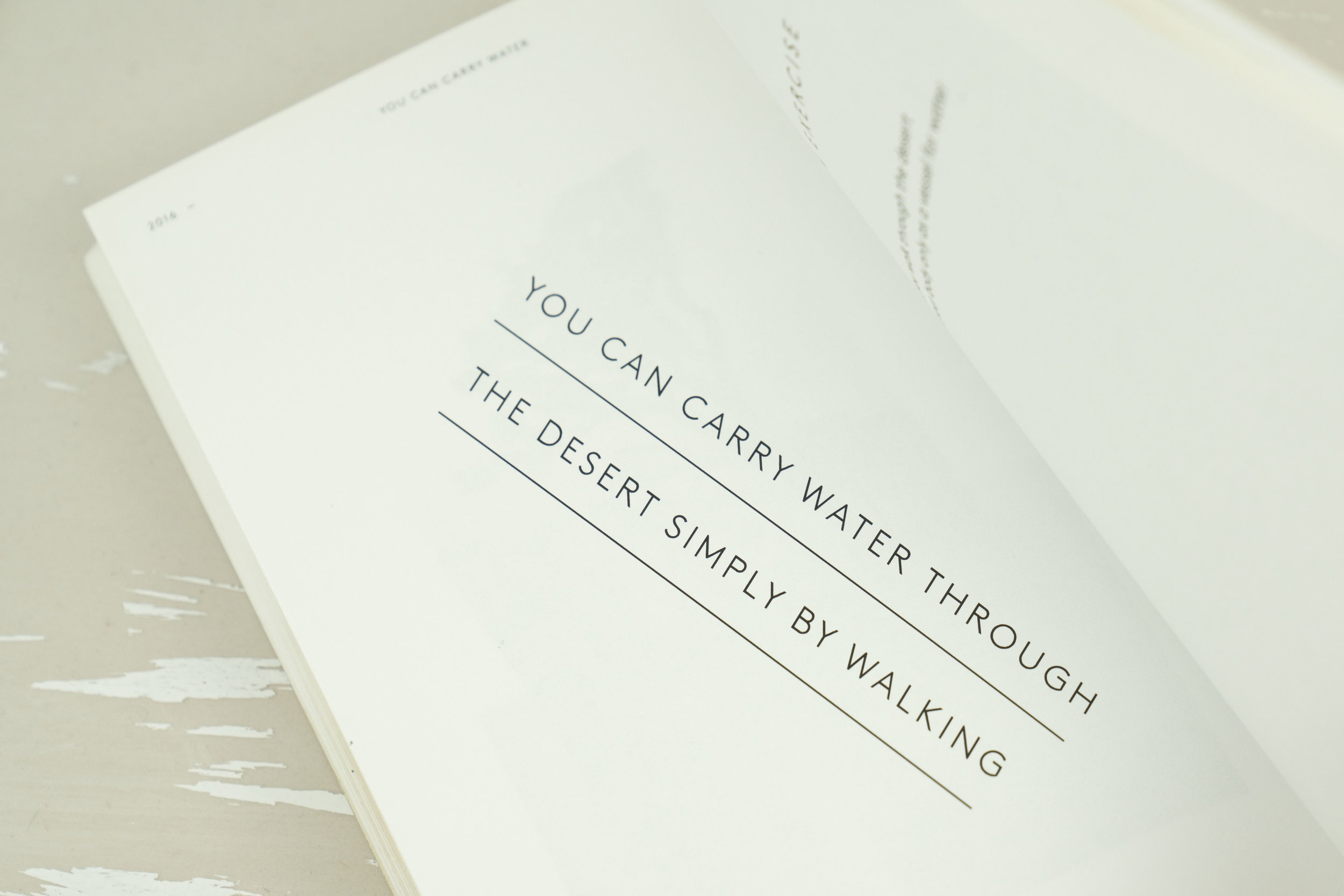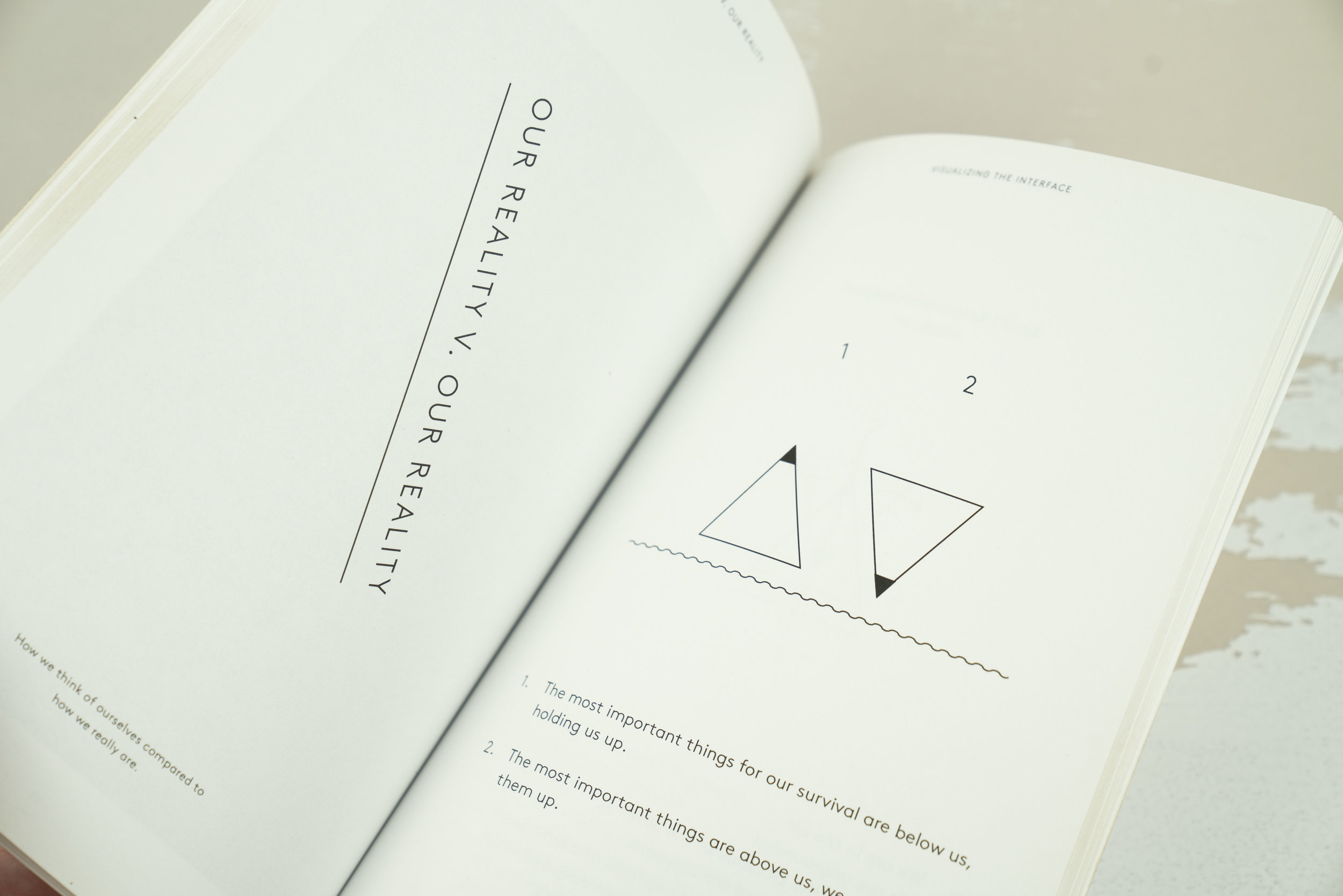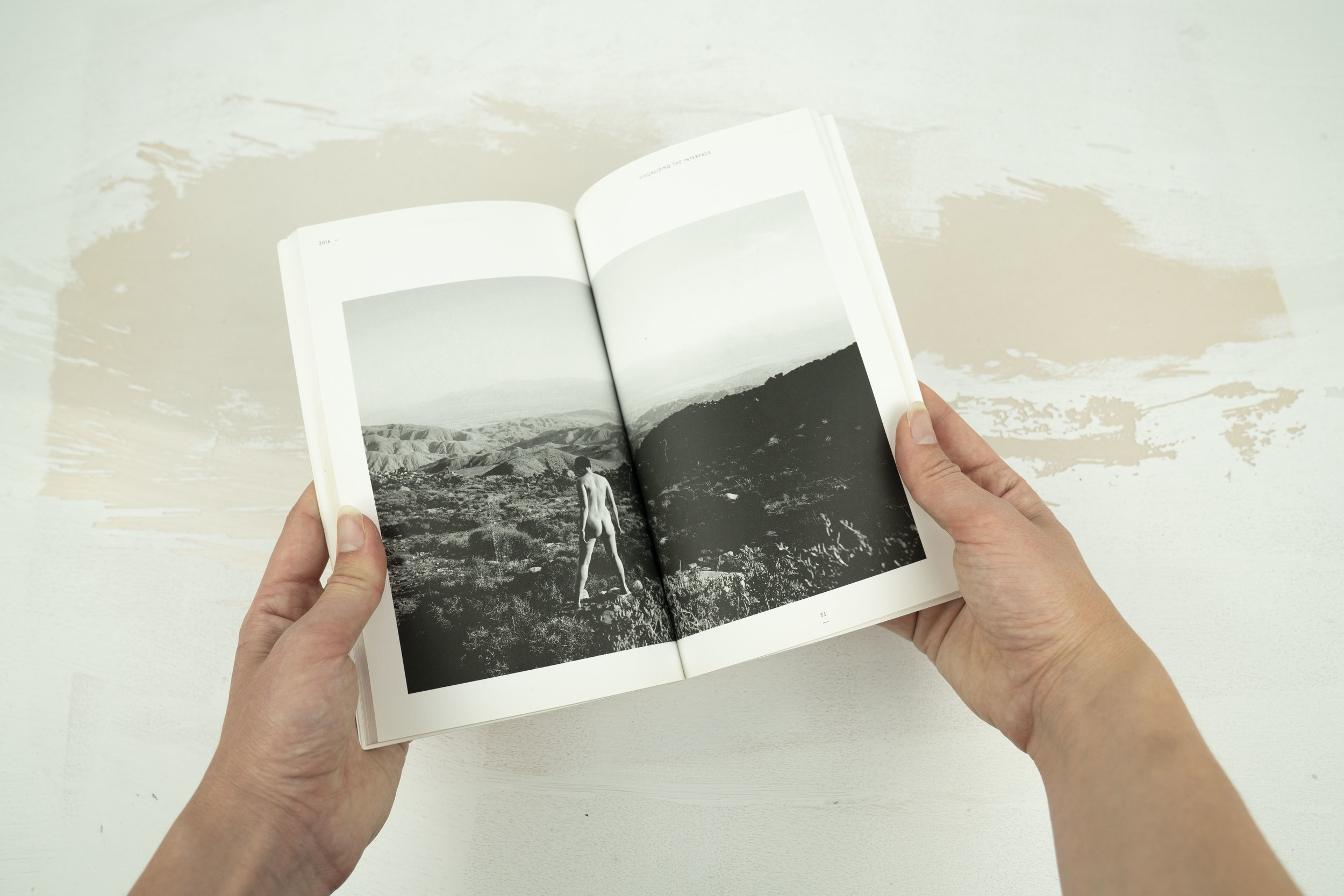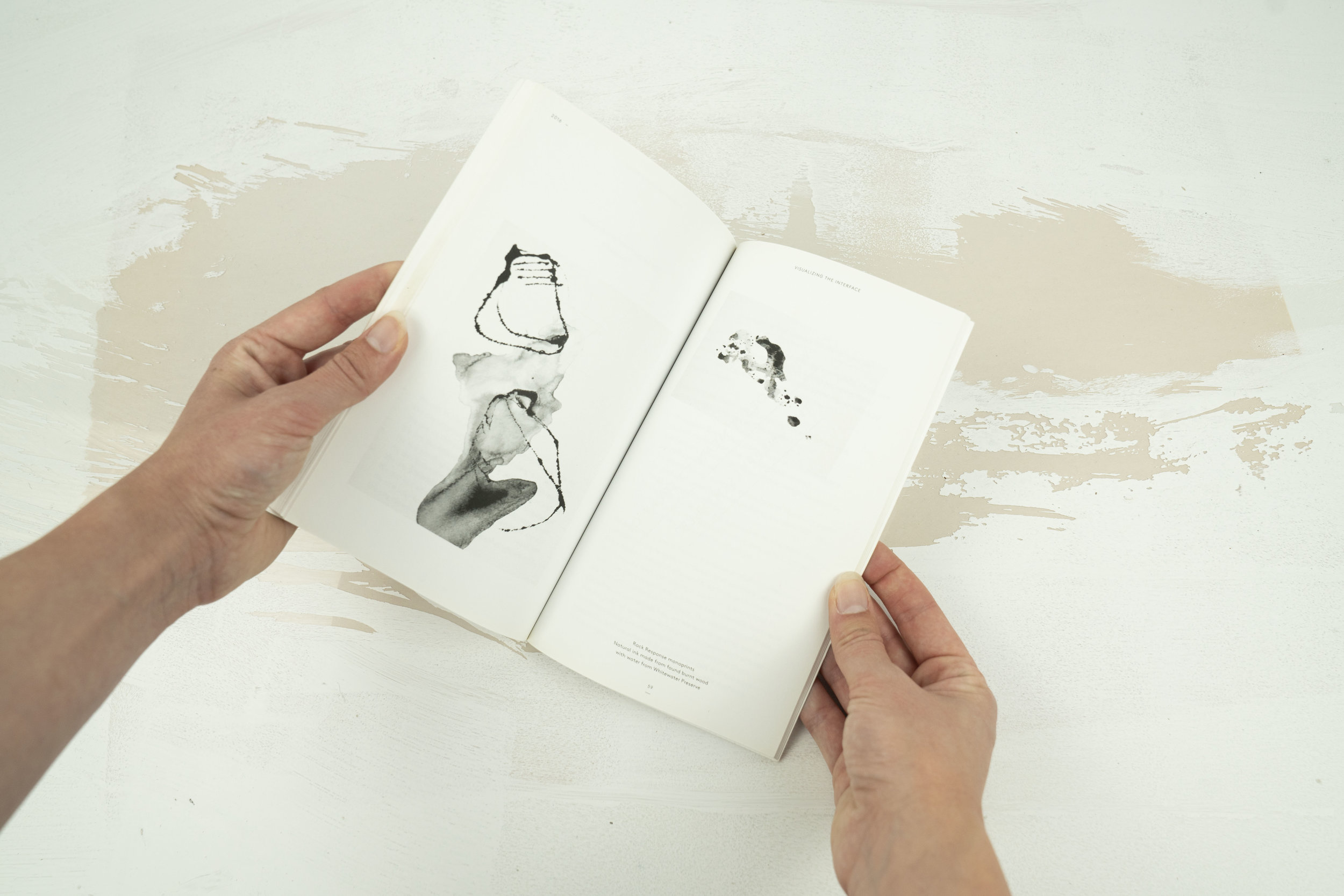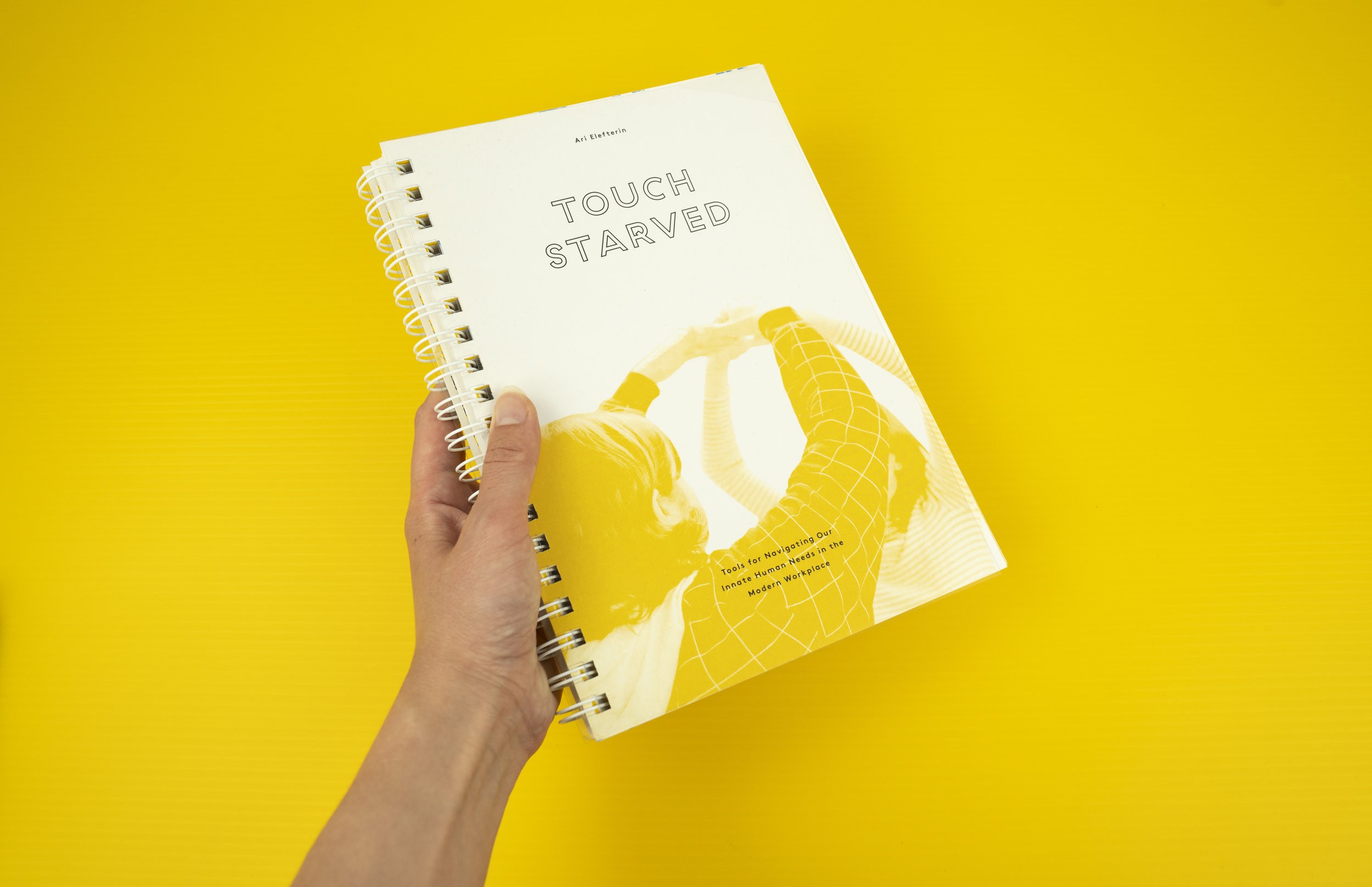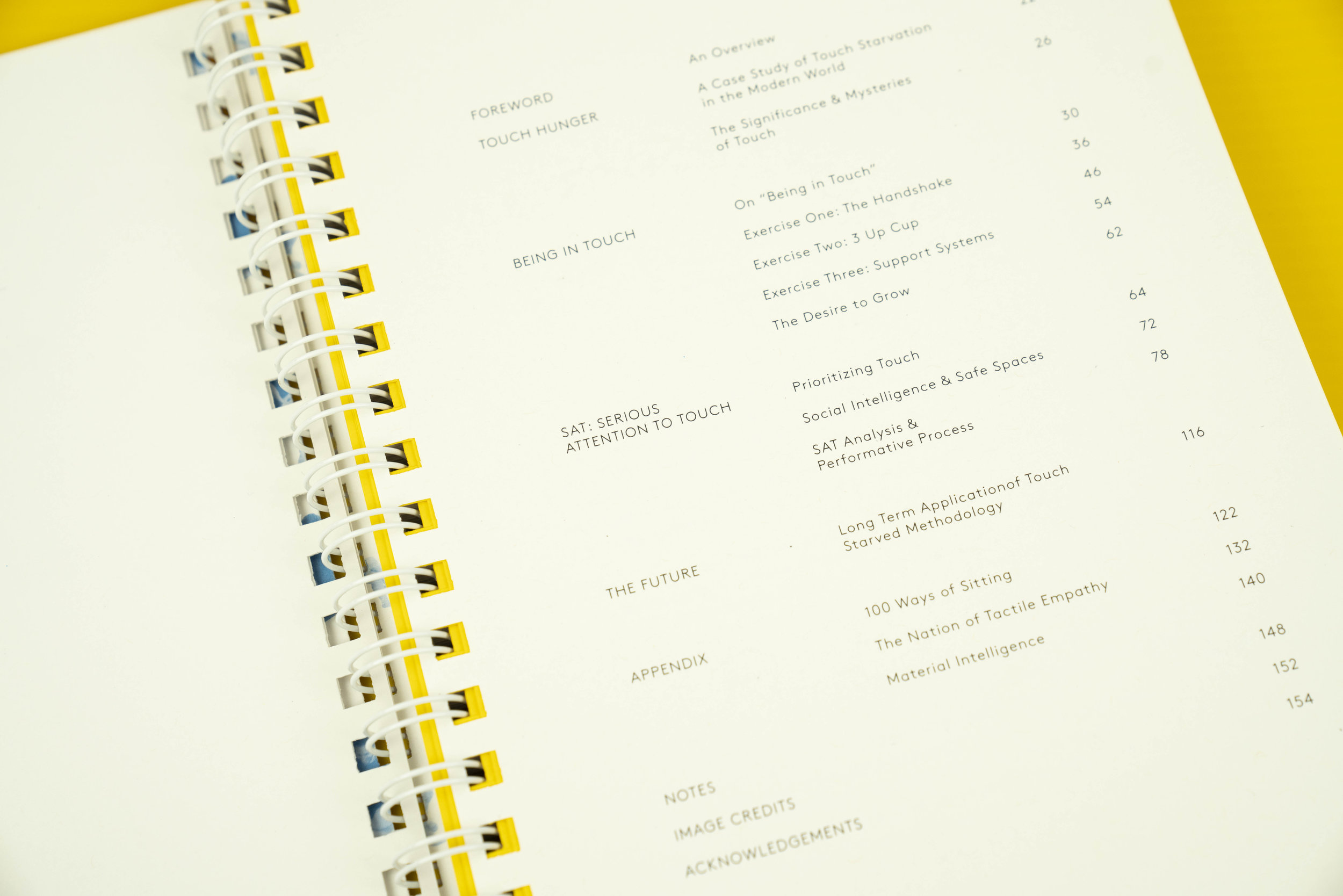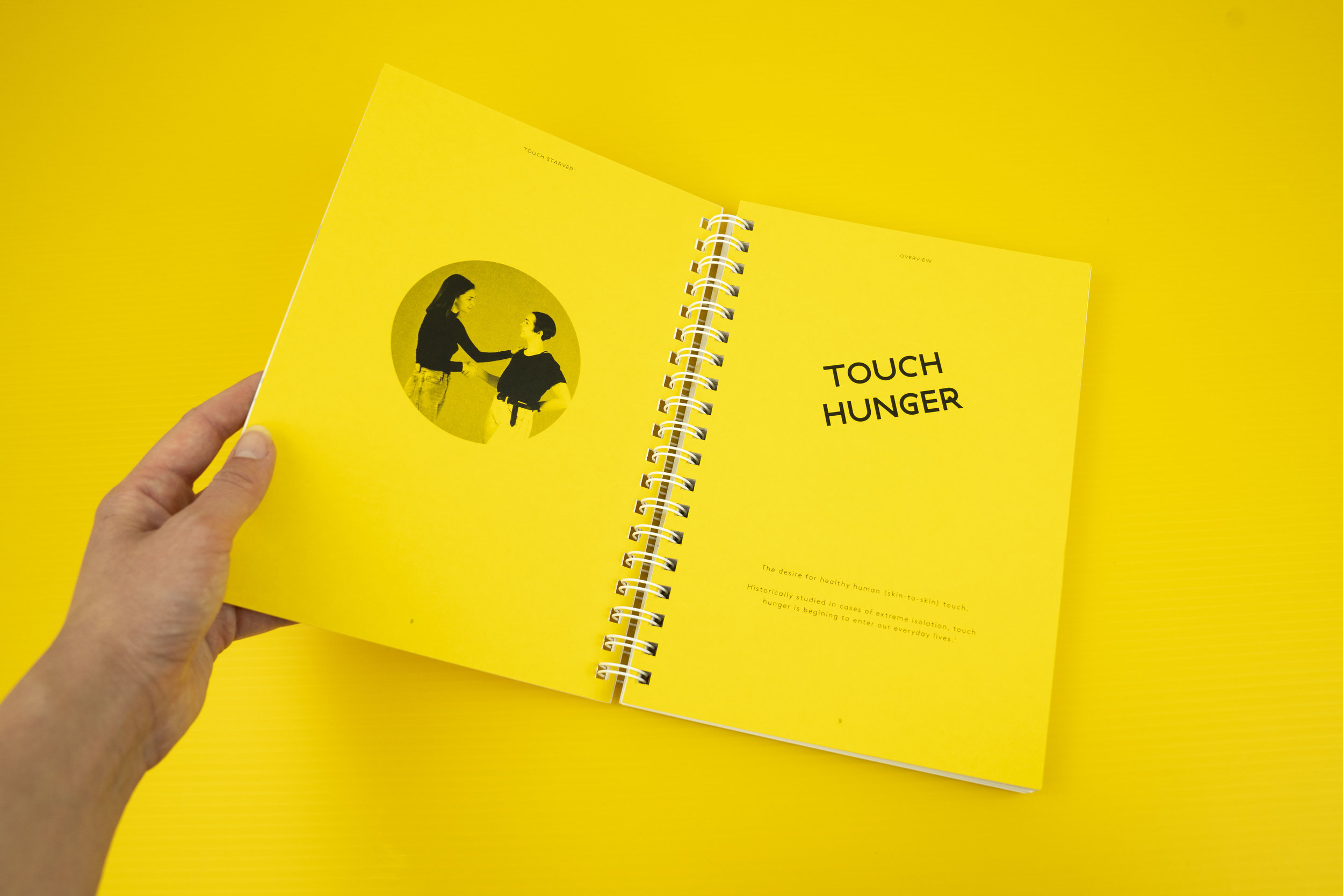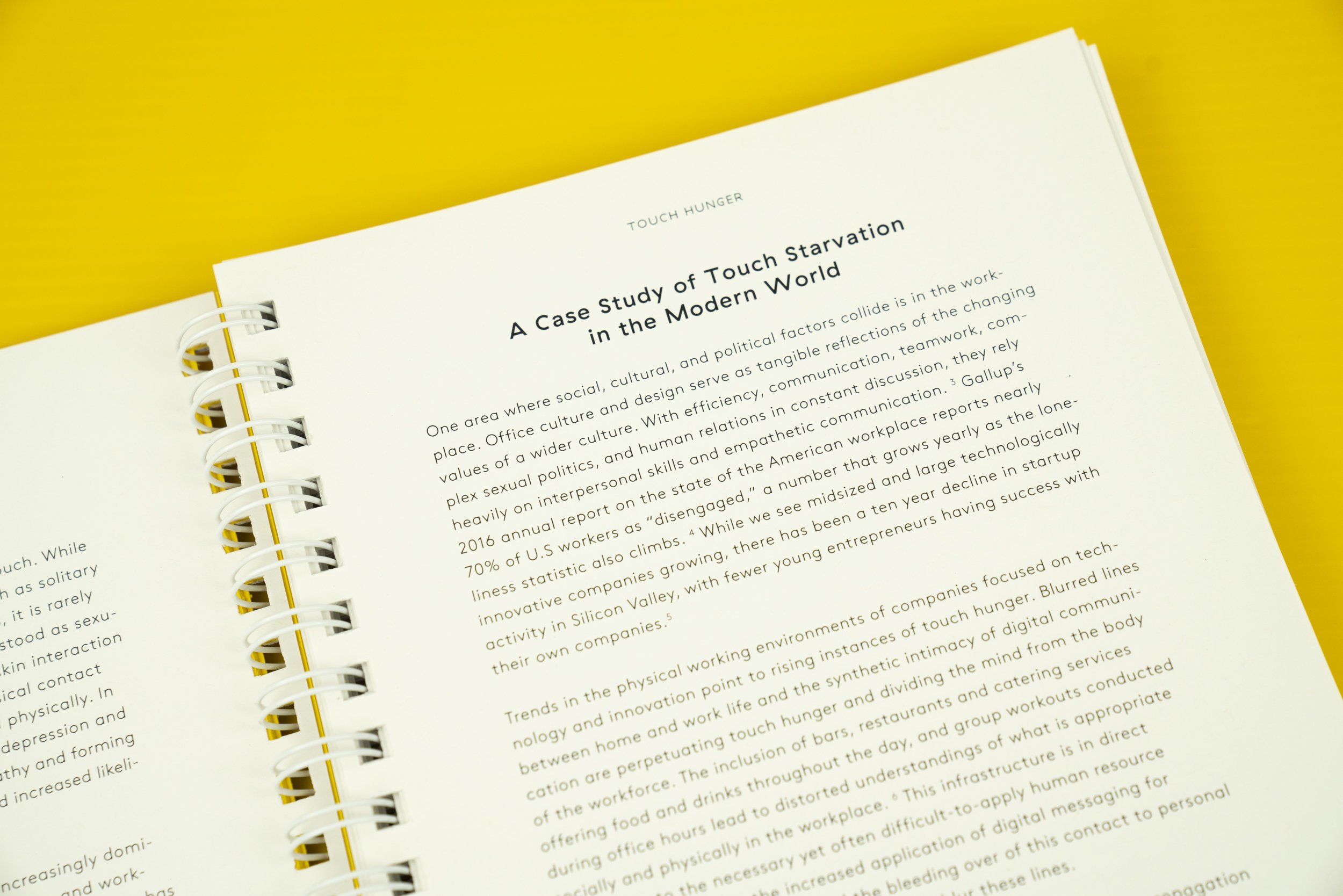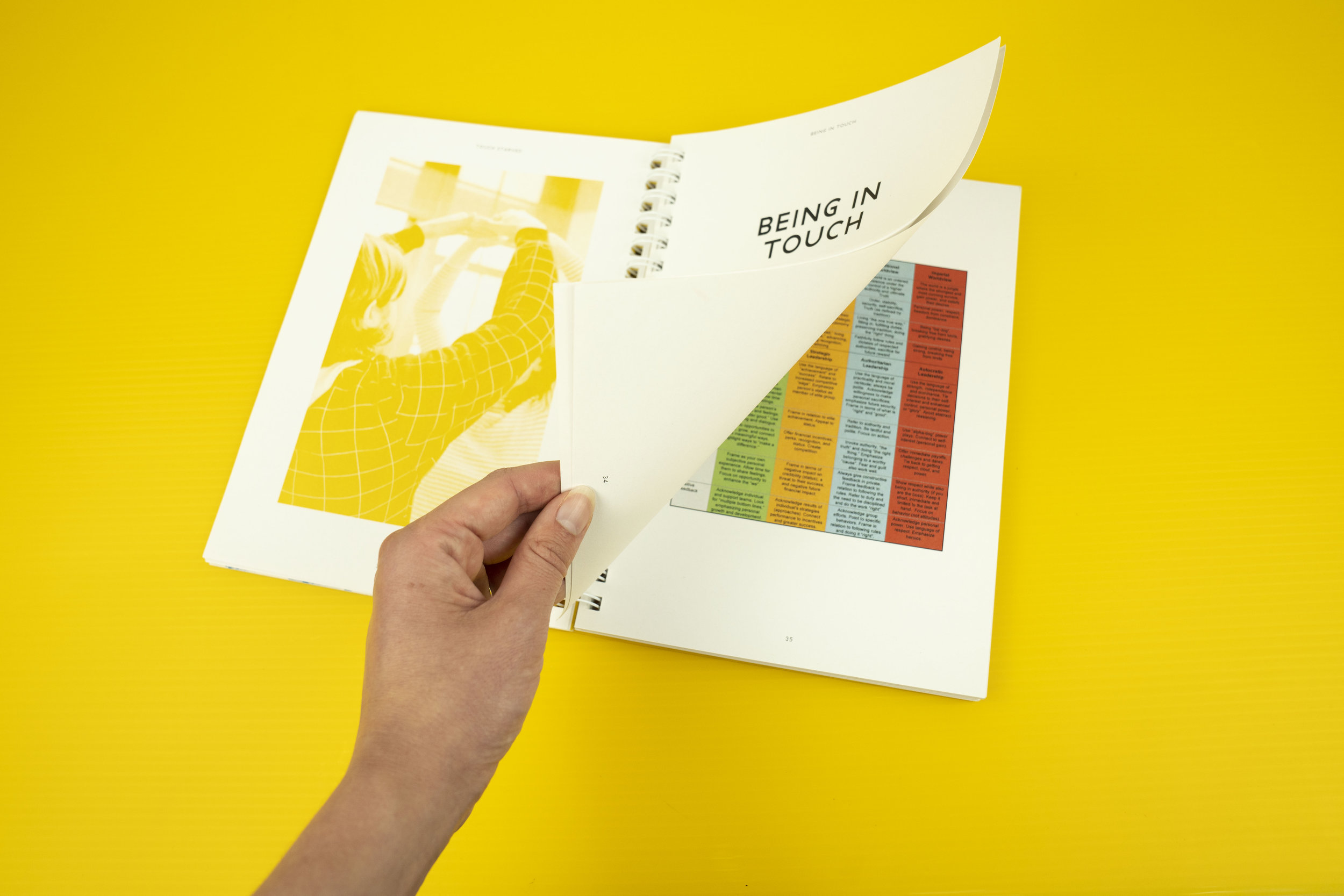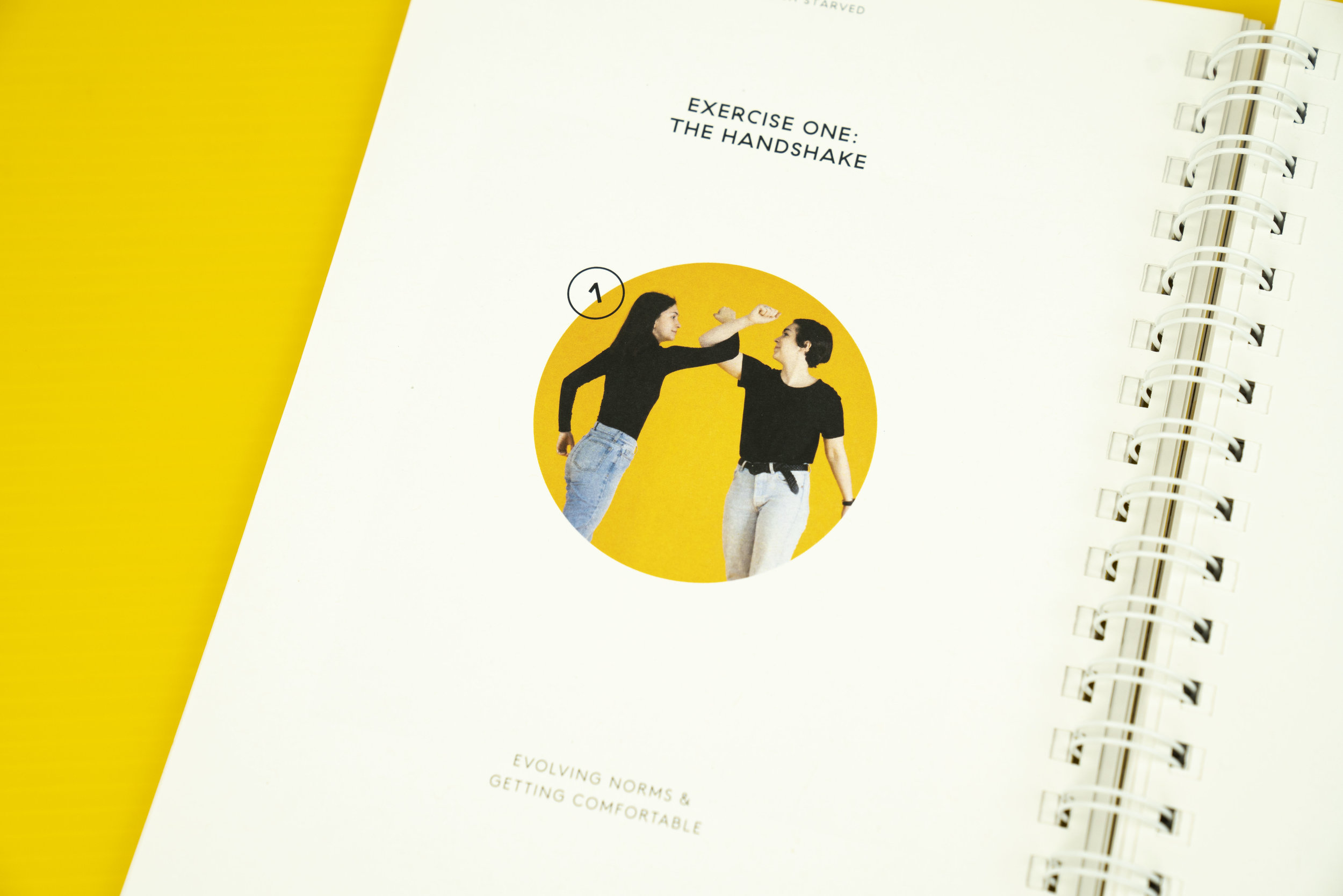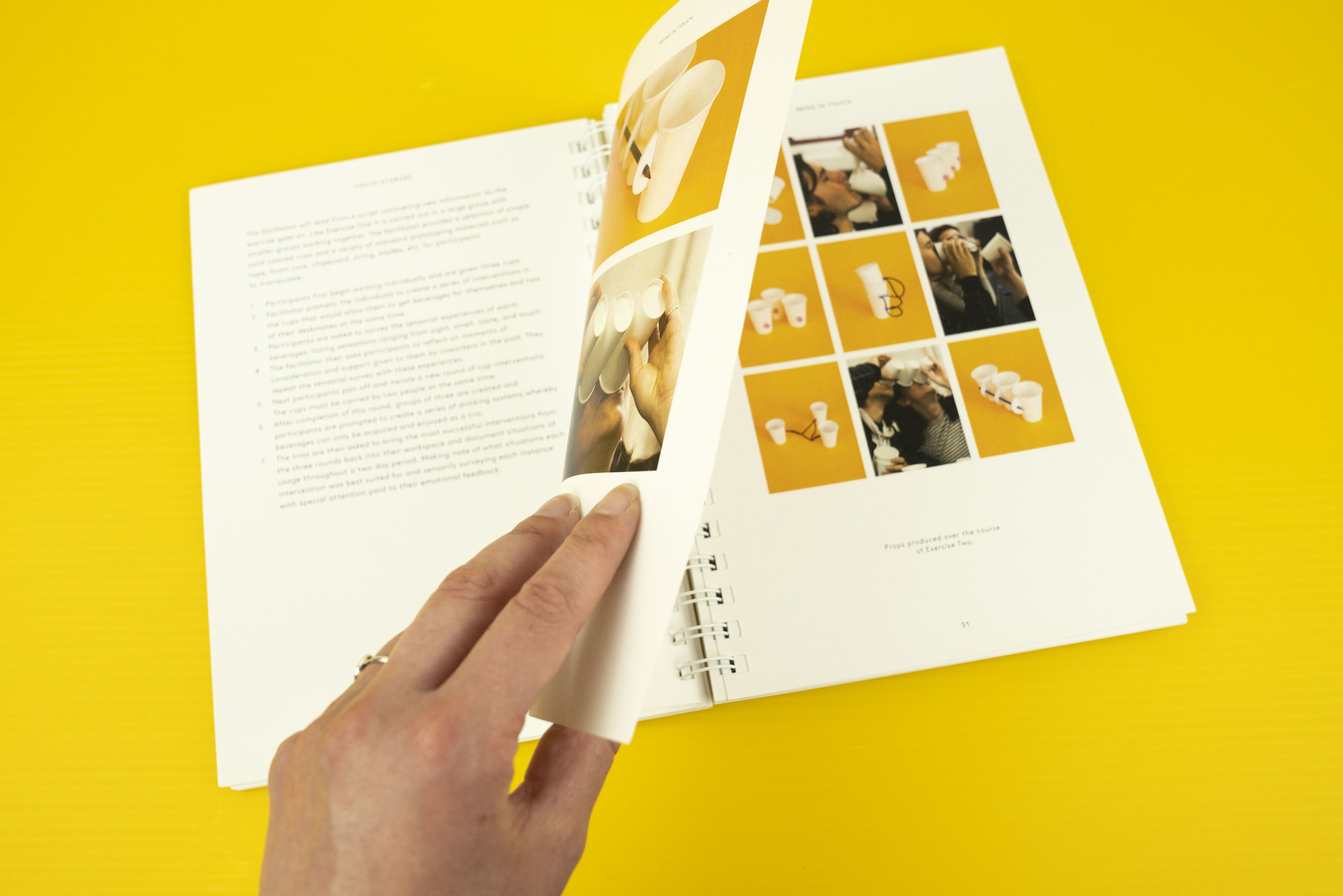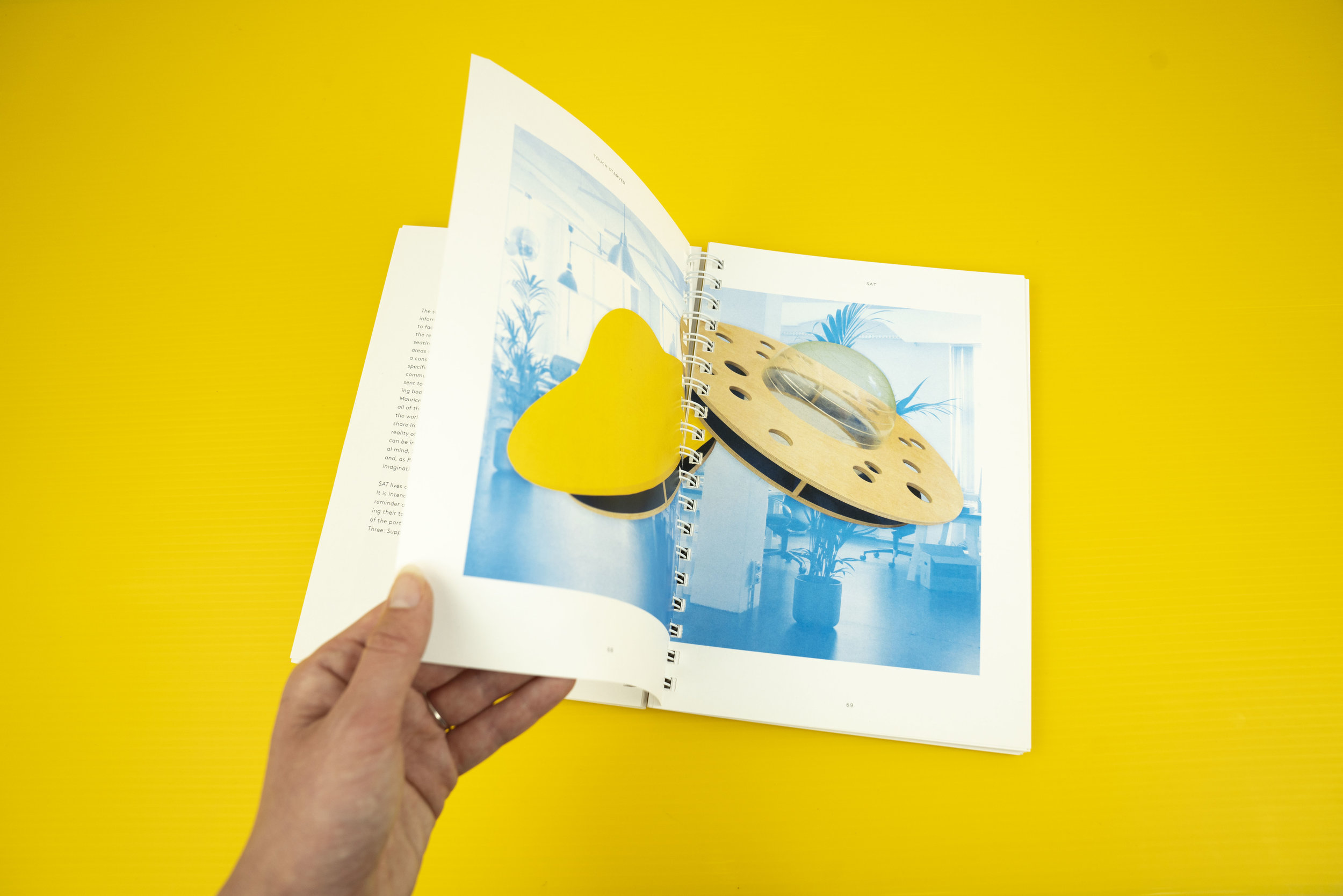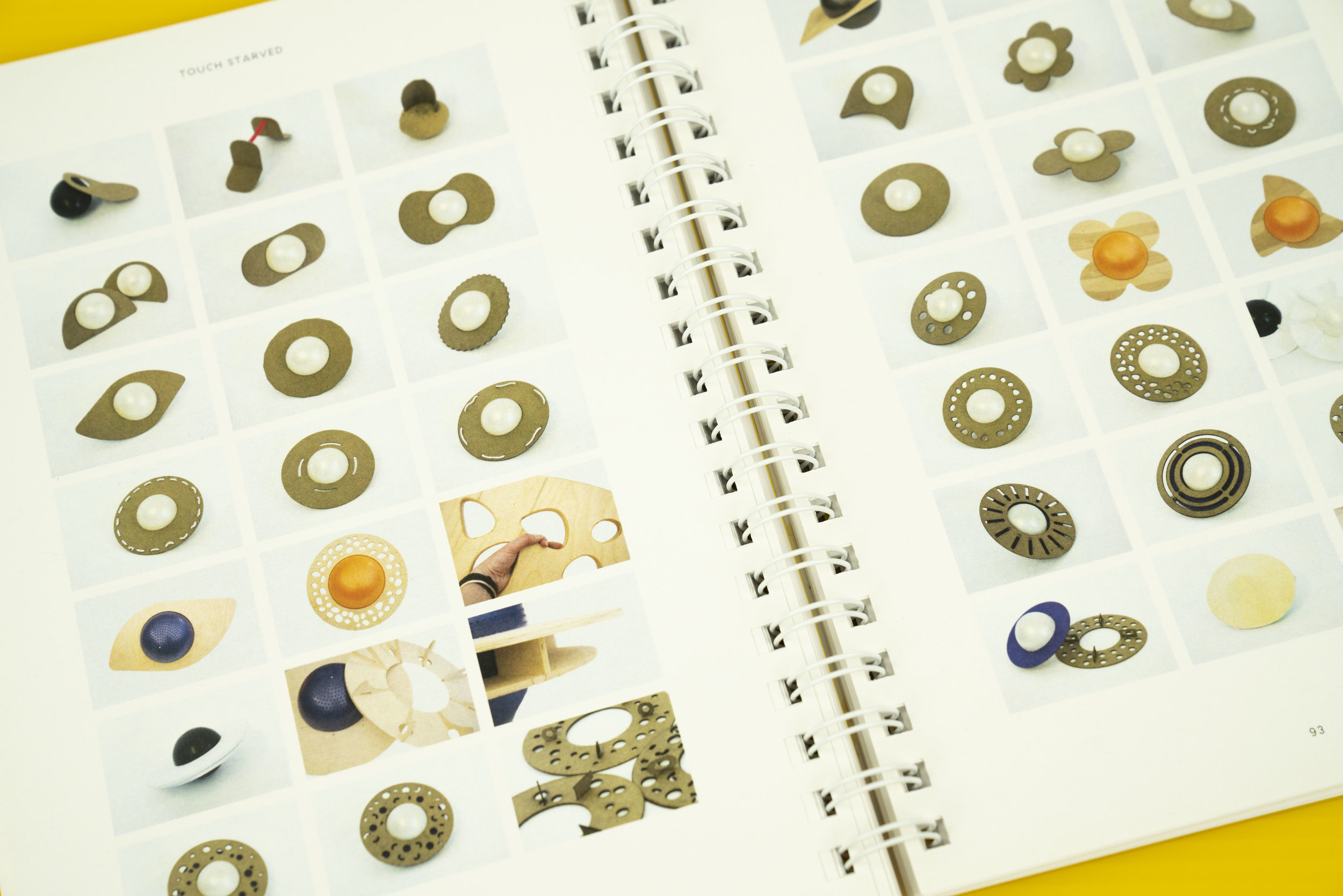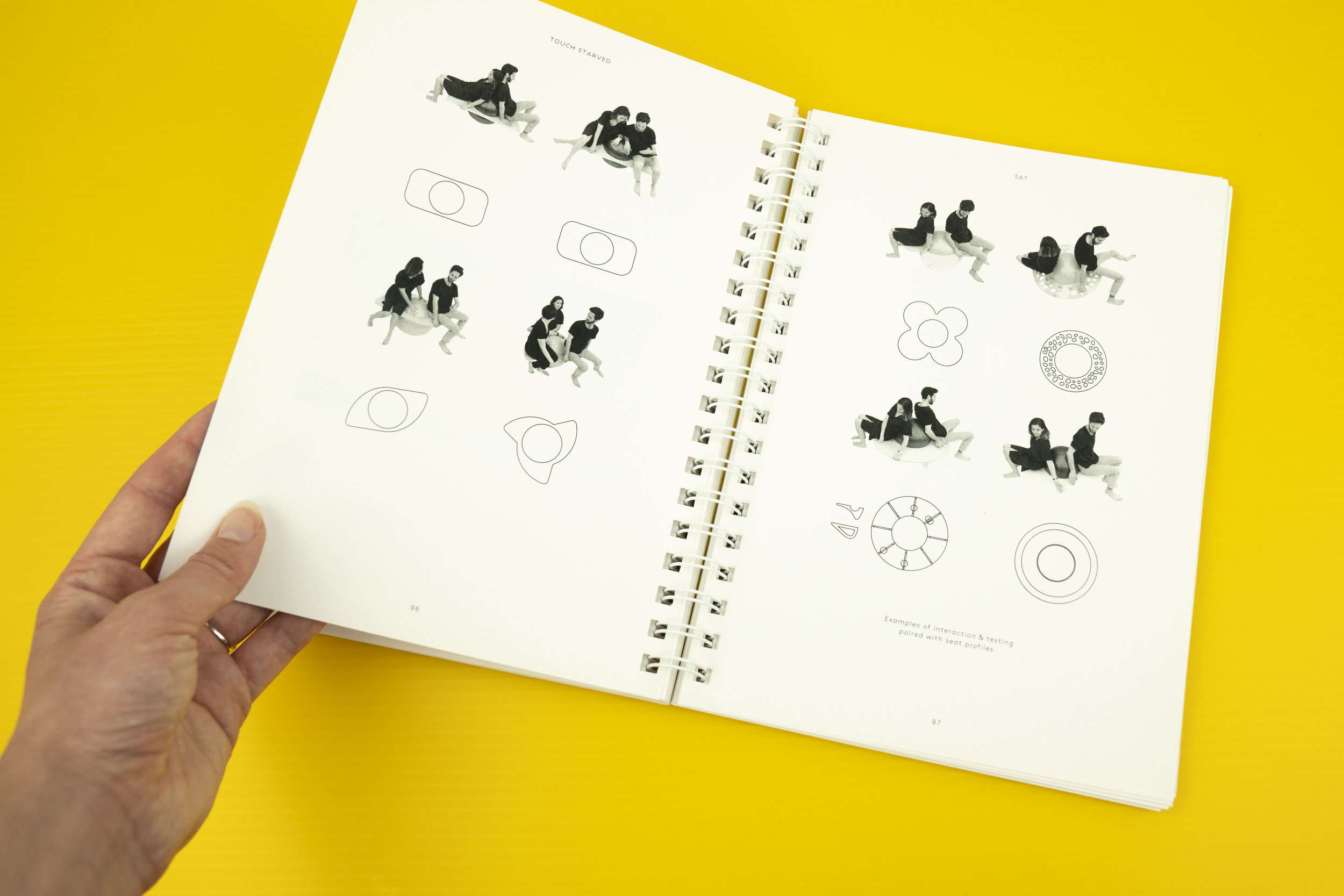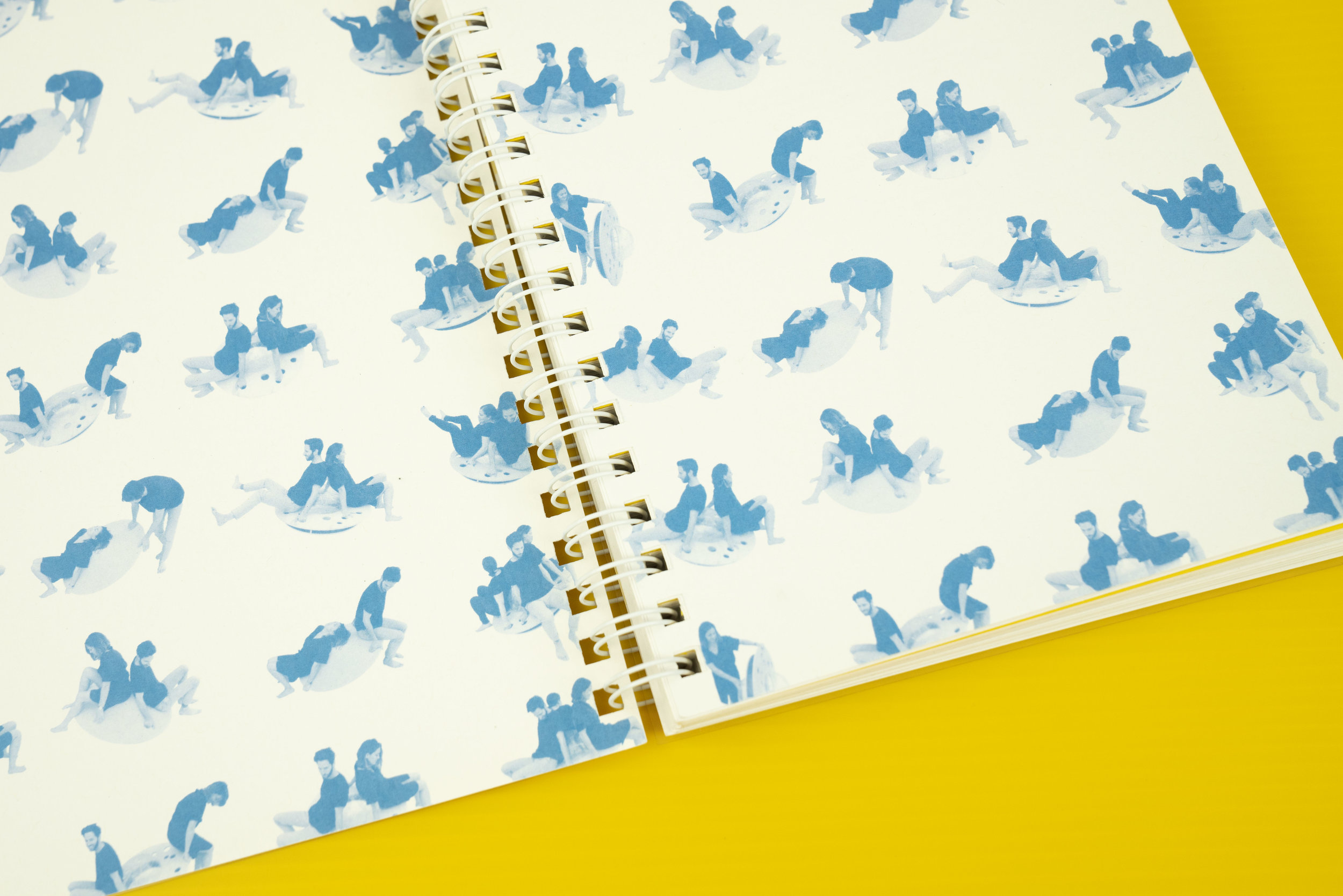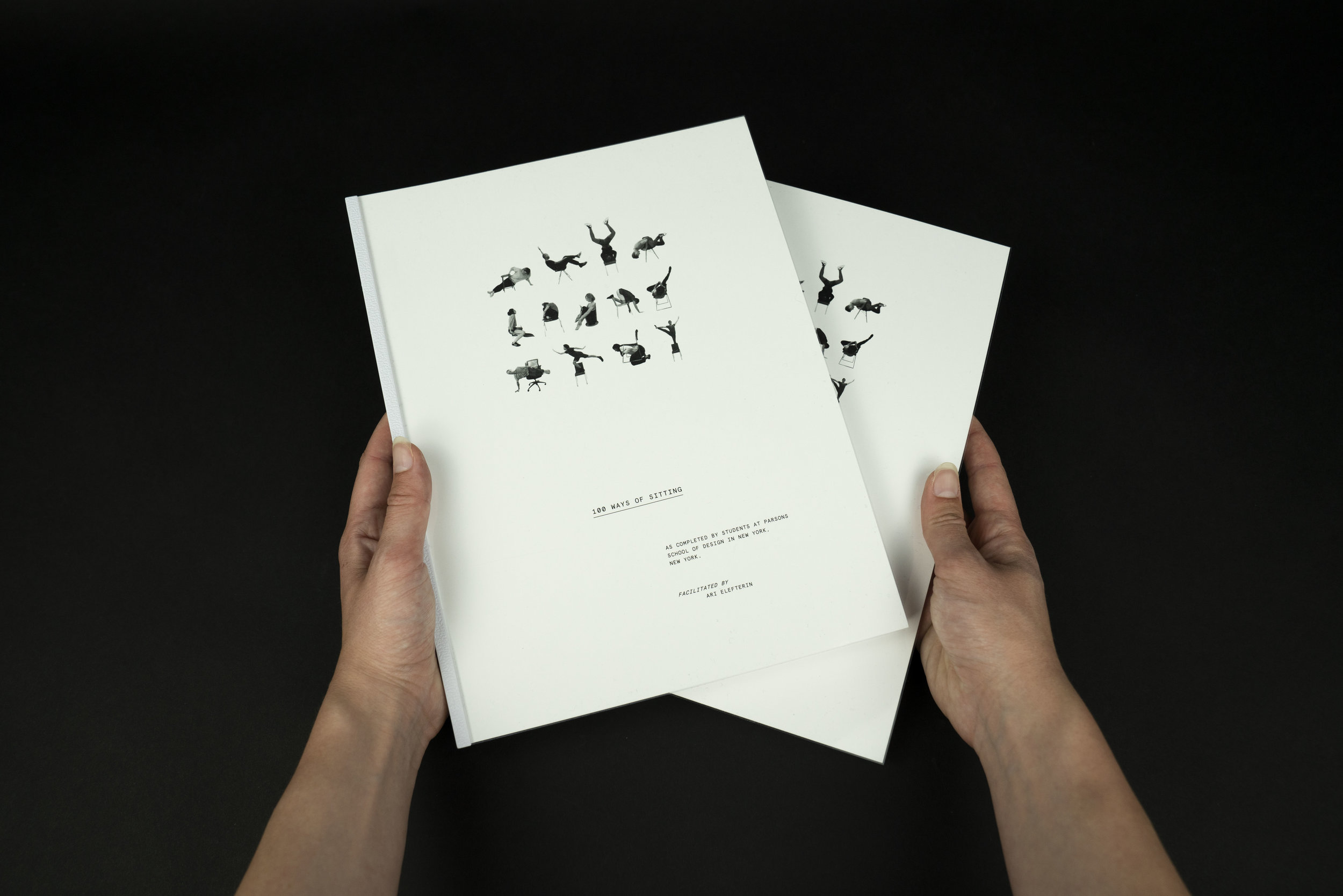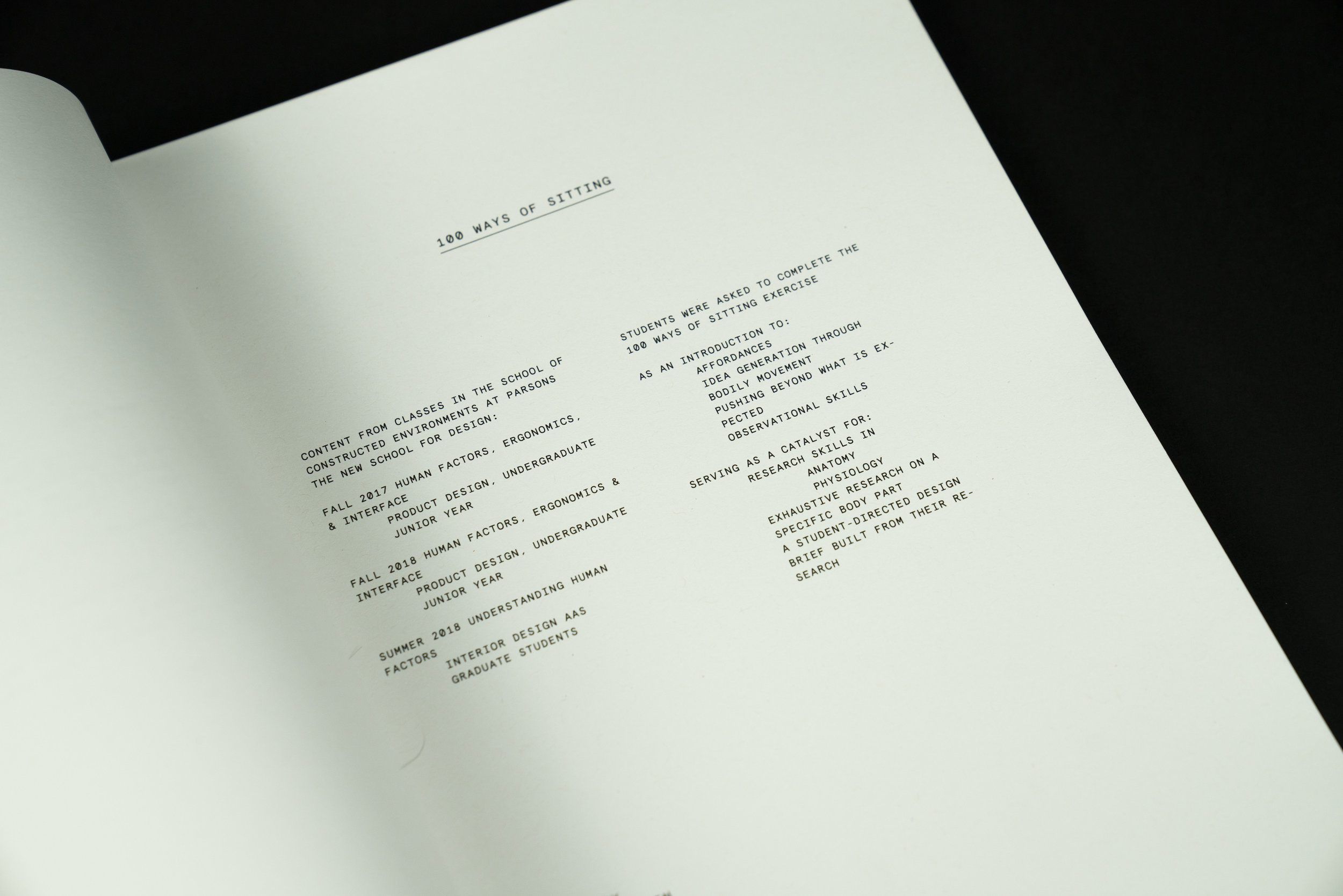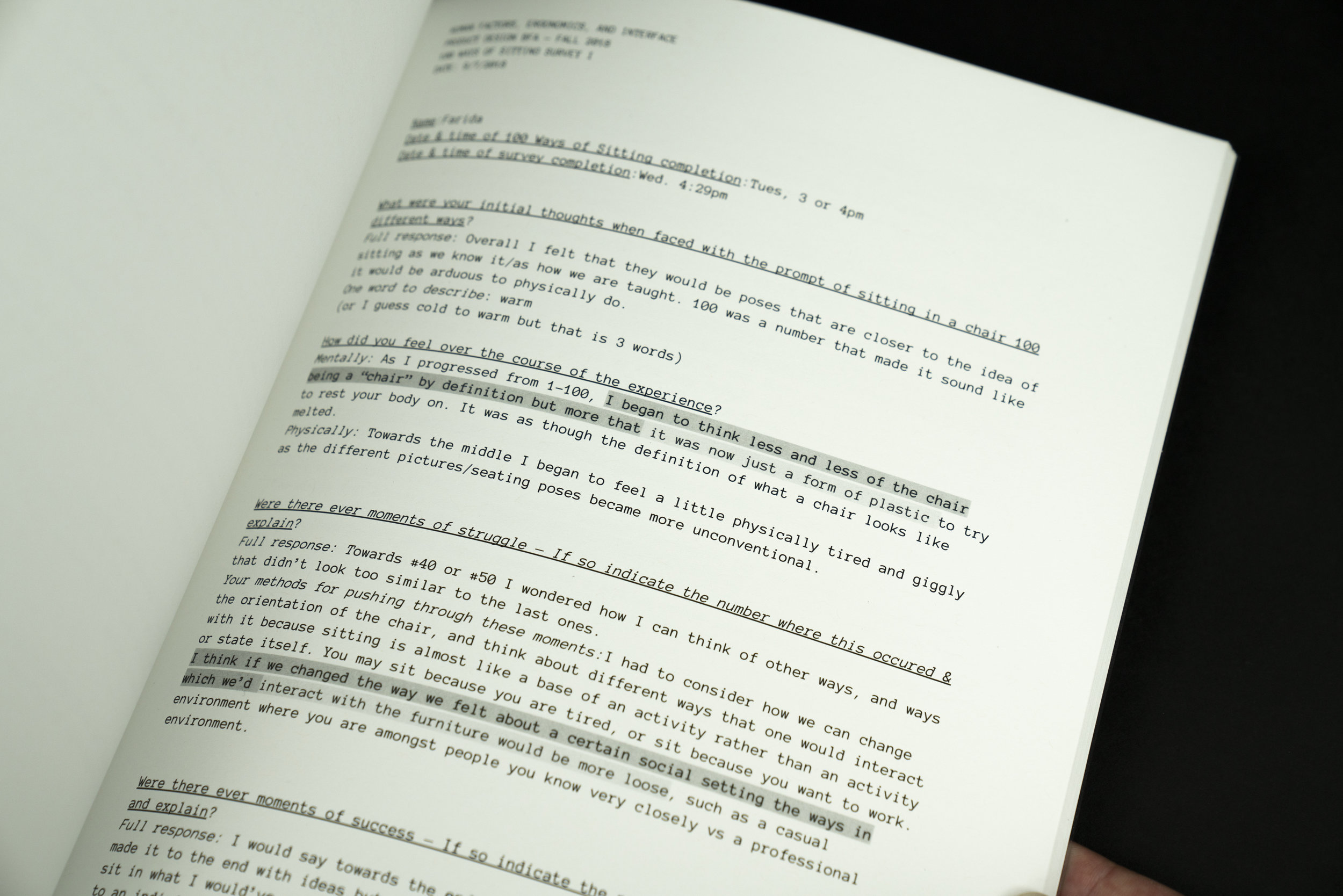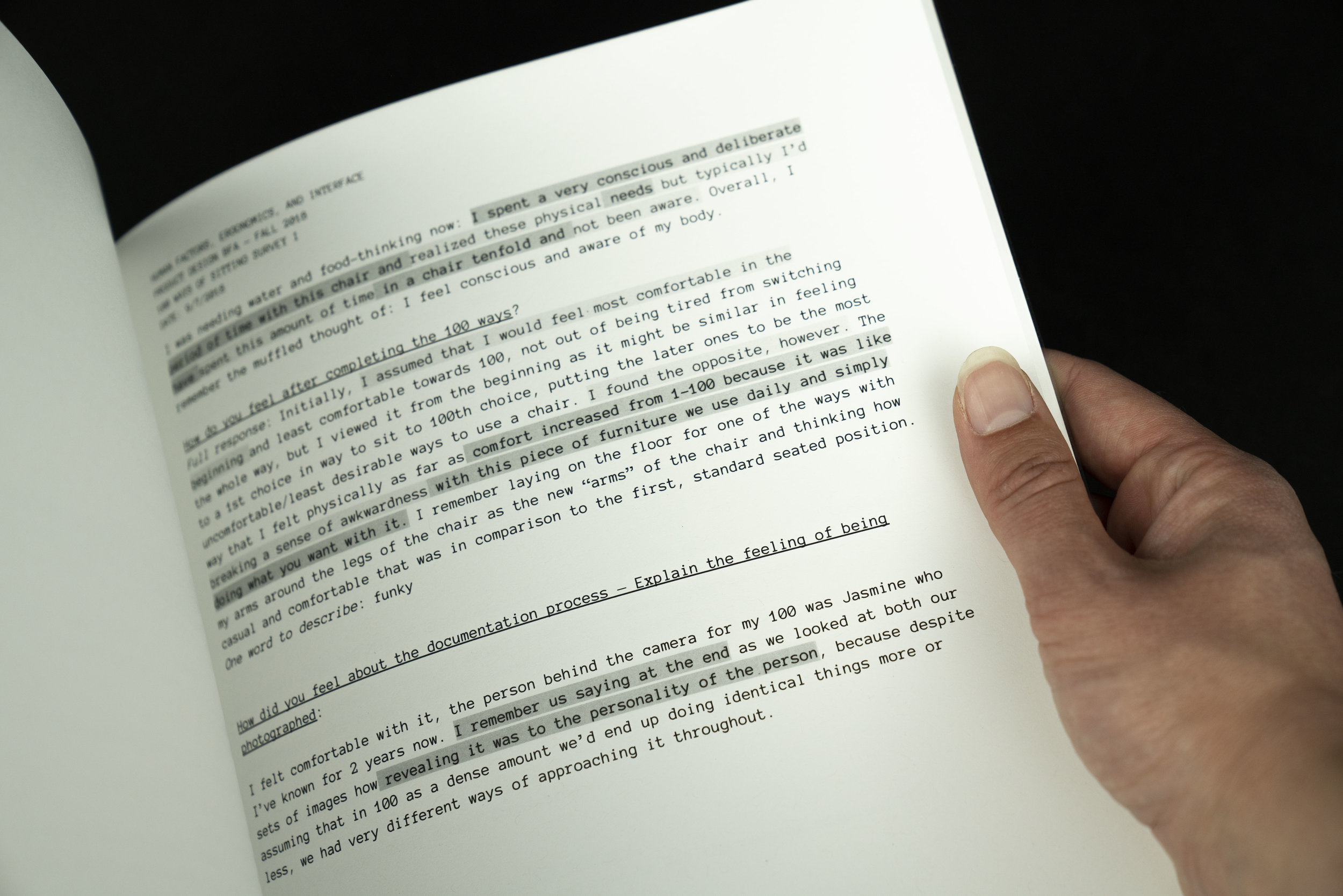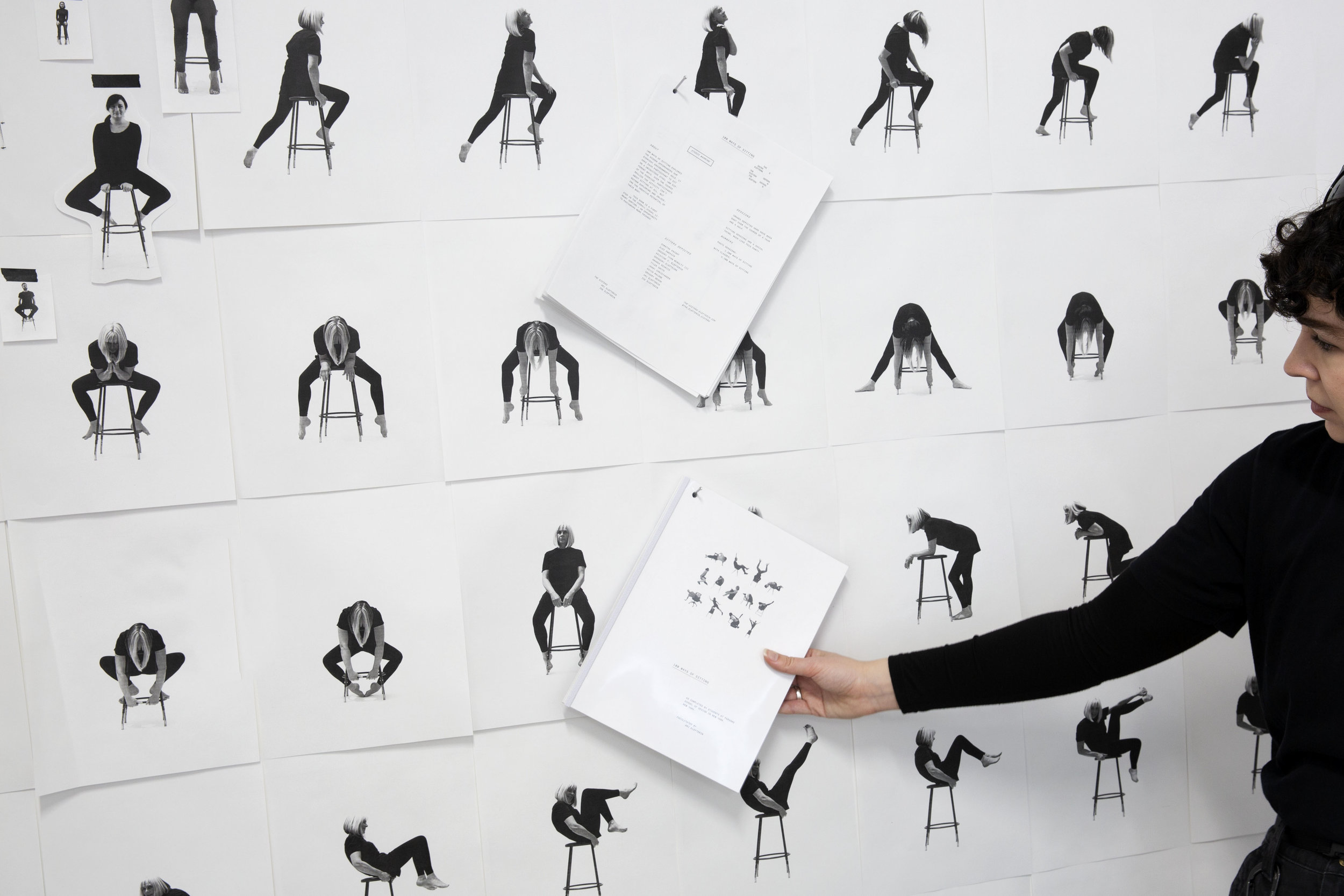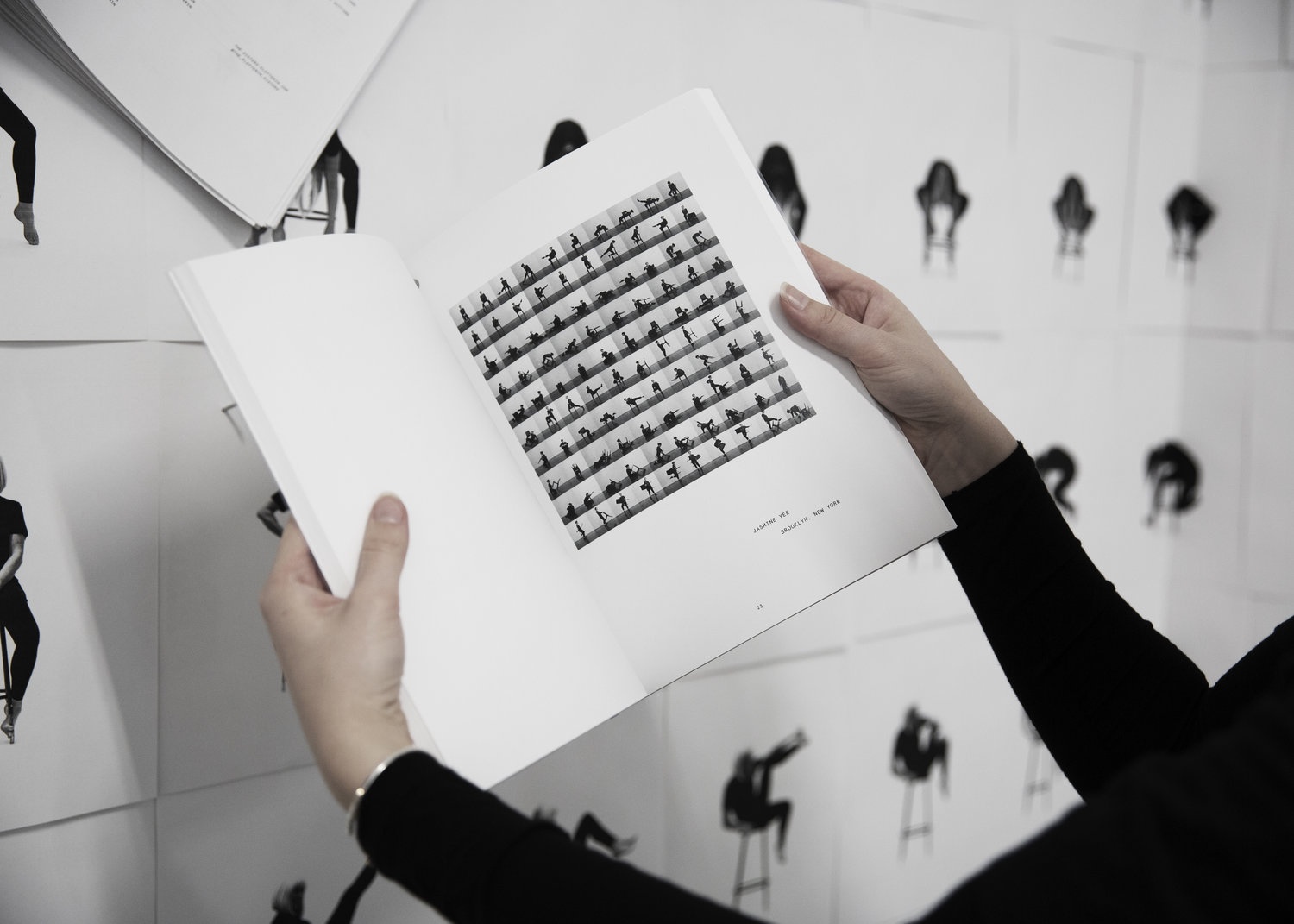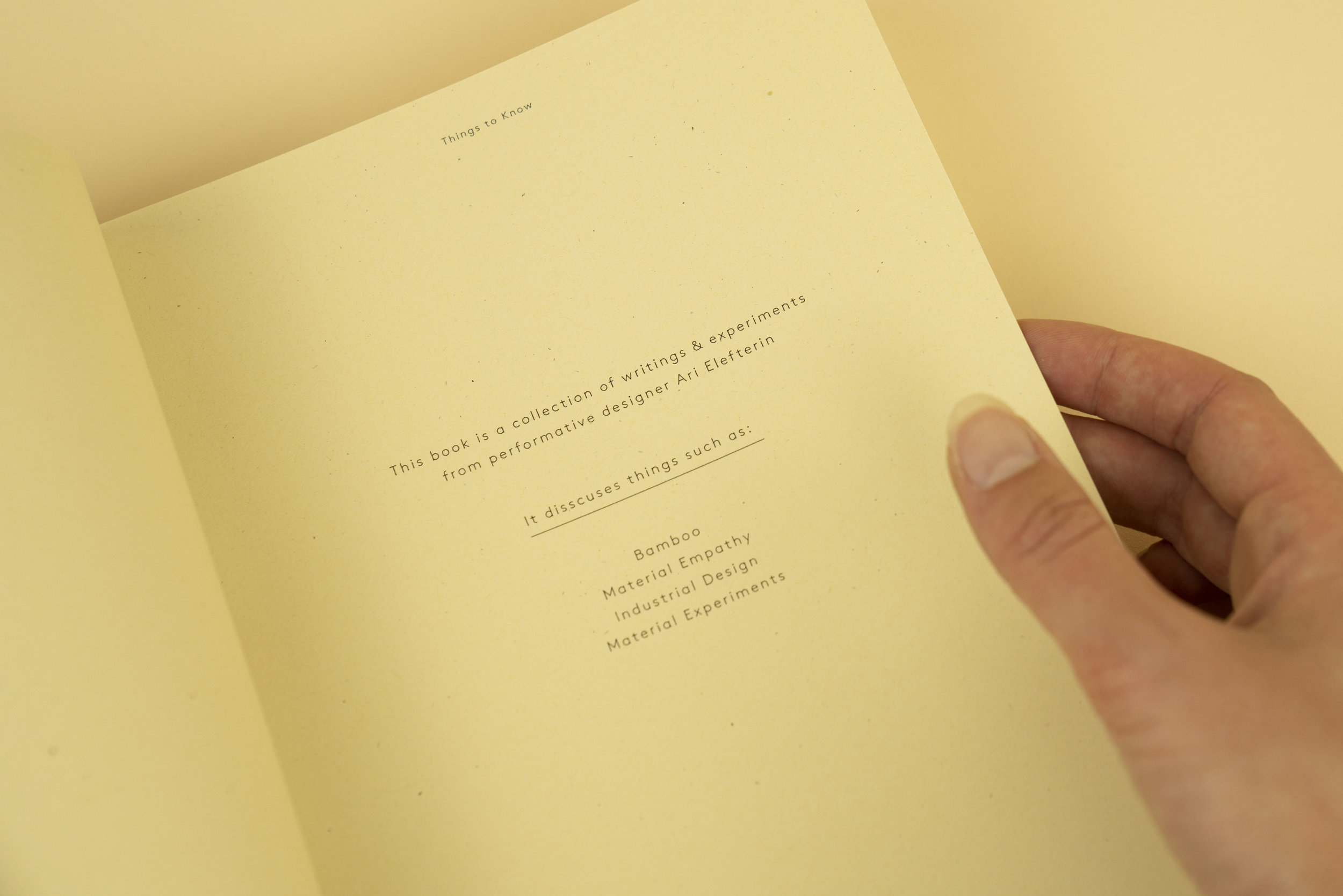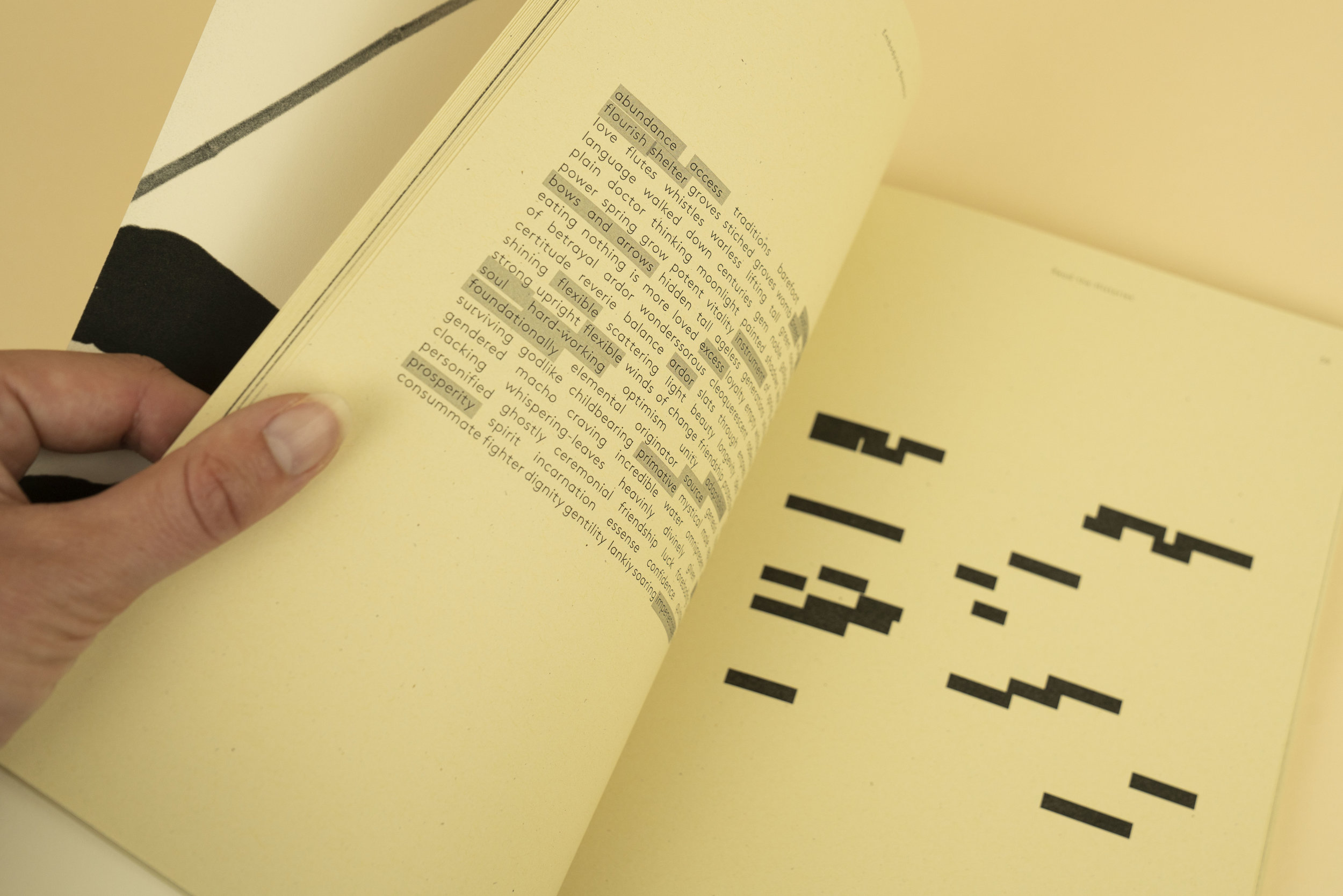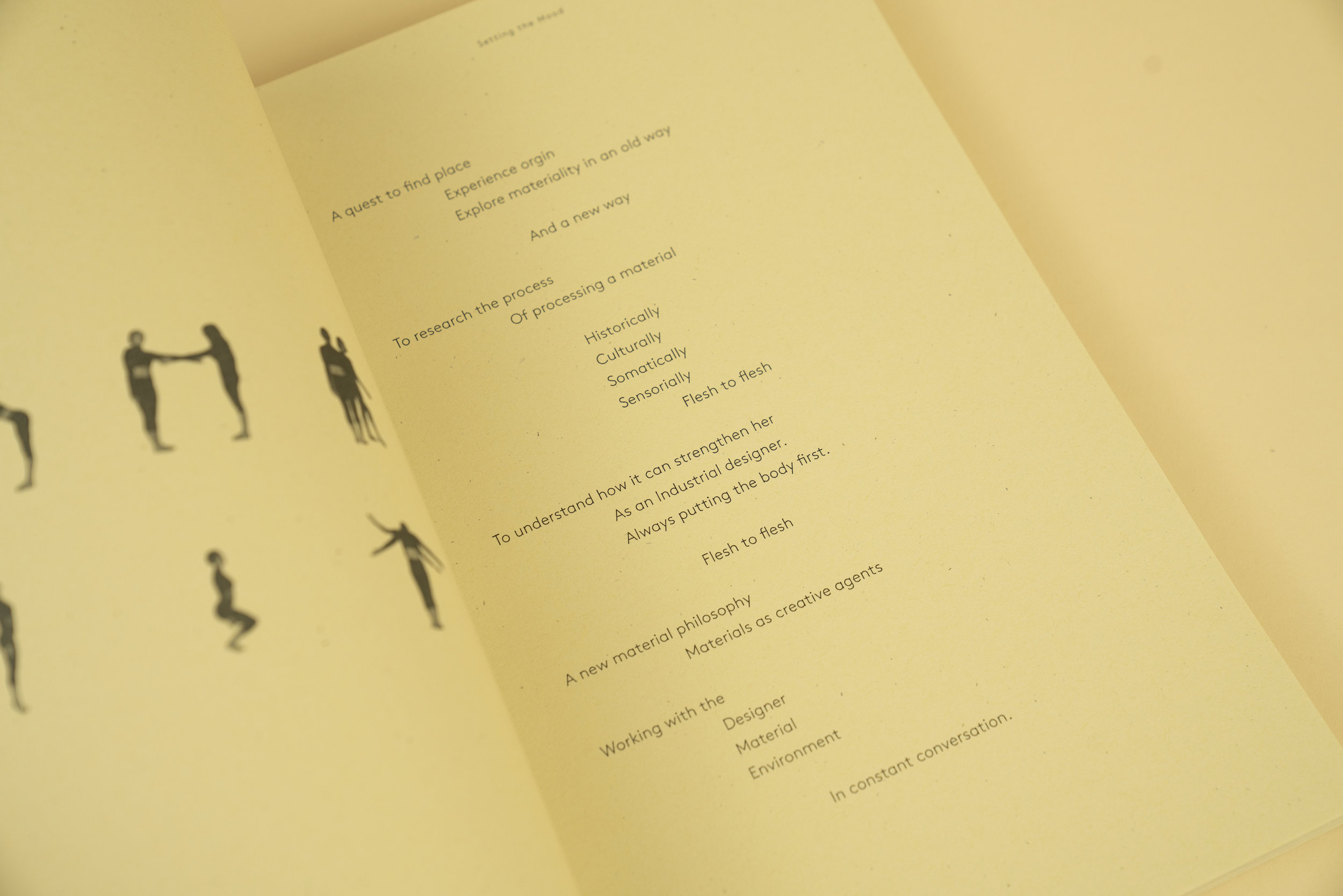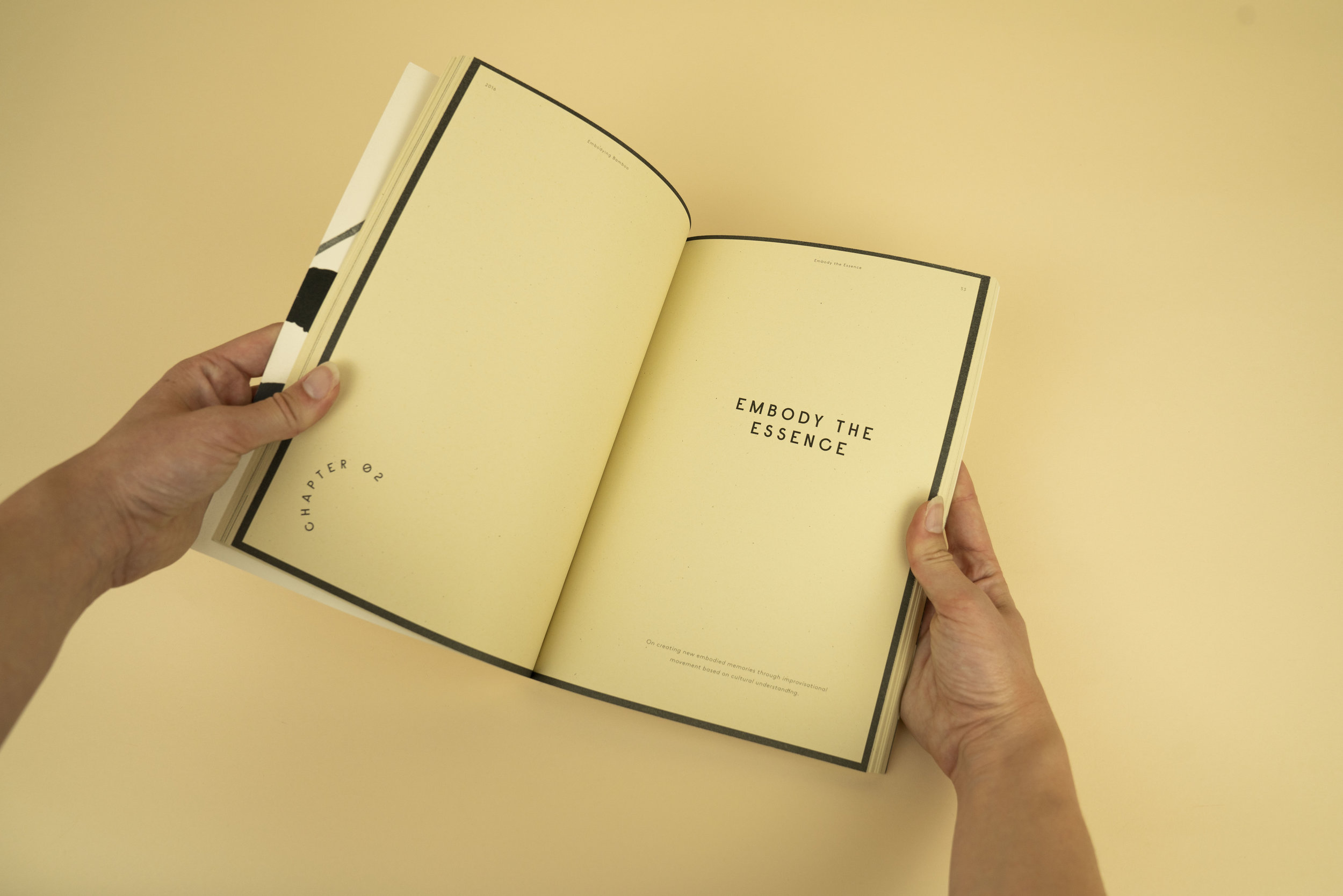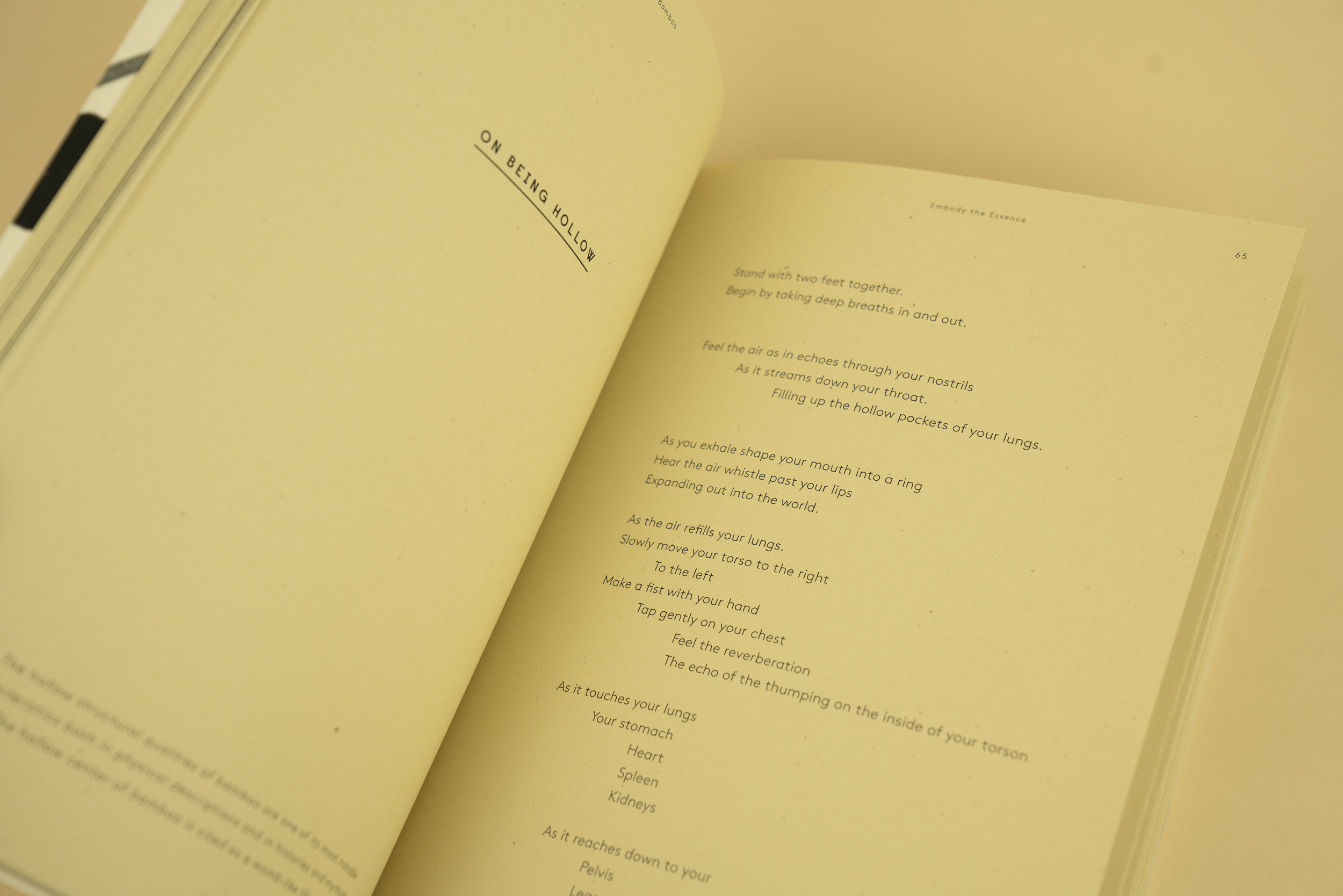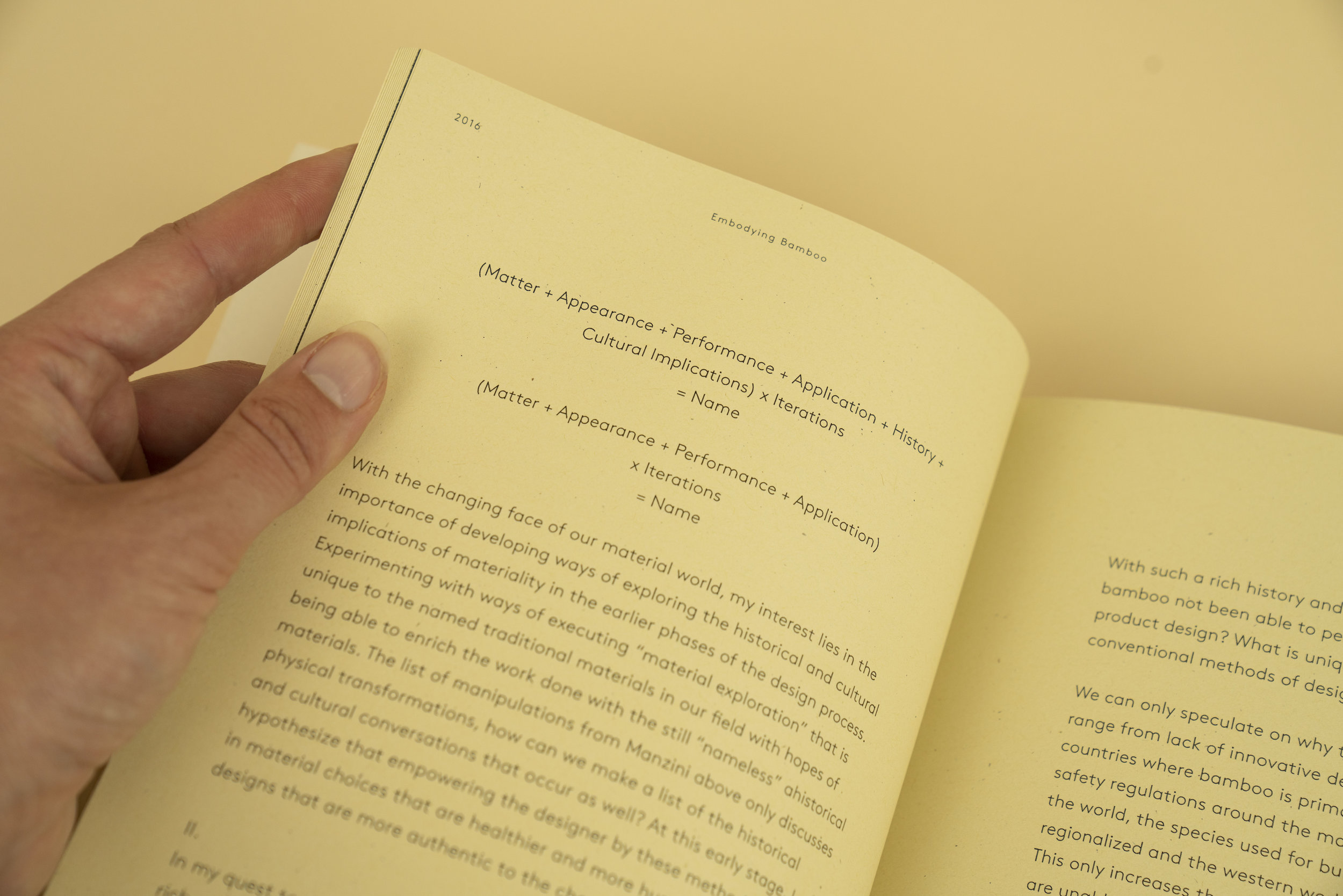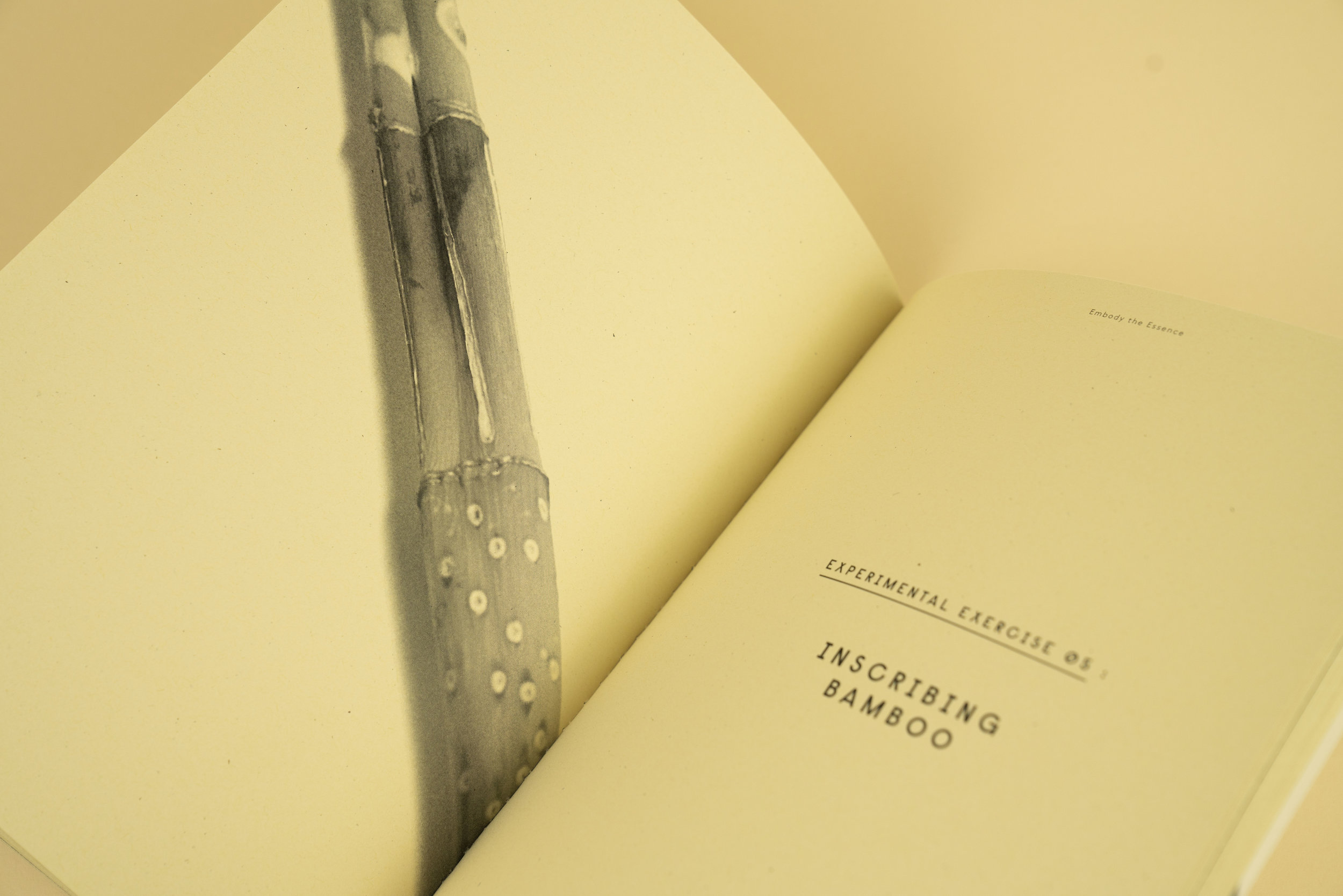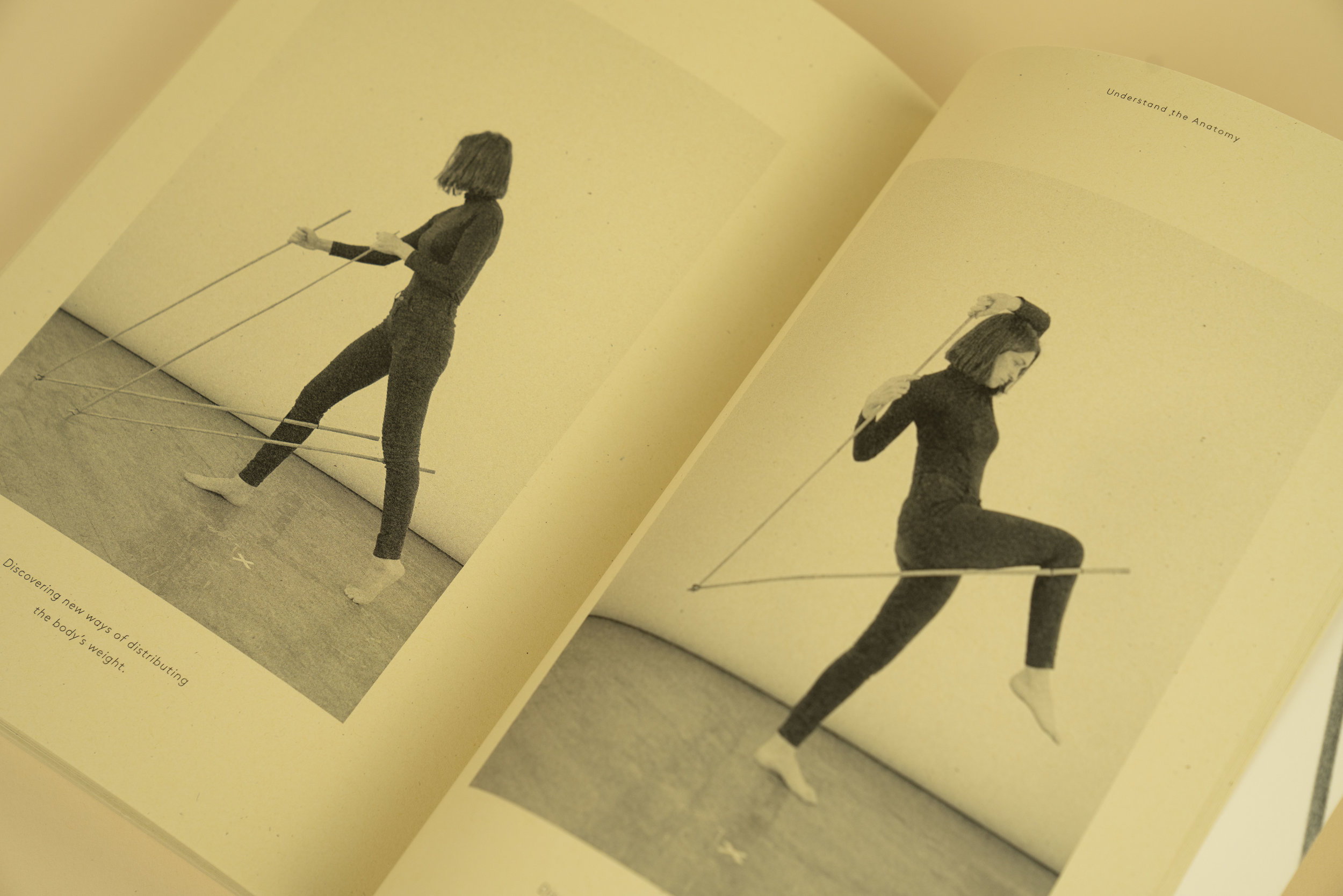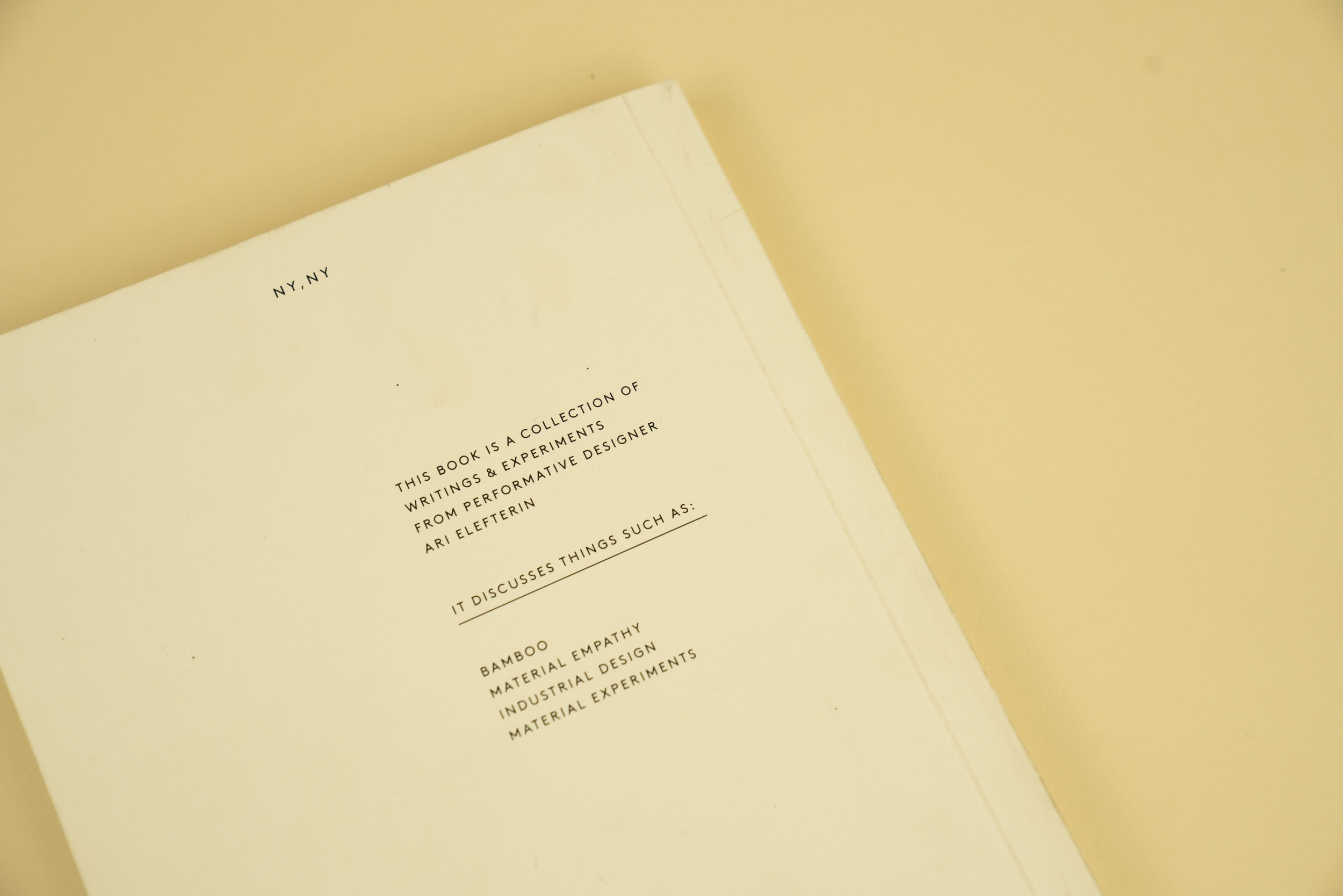publications
Experiments, projects, writings, and research compiled in the form of books. As part of my process-driven practice I work to chronicle all elements of my arguments and exploration to inform deeper theory development and dissemination. Portions of these projects have been published or shown in various places, all the books themselves are self-published.
All content & graphic design done by Ari.
Embodied Water: A Future Where Products Teach & Conserve
“Can we create an empathic connection with inanimate natural resources? Can we feel the pain of the ice caps? Can this pain imprint itself within our bodies in the same manner as human trauma?”
Calling for a material and ideological shift in the traditional product/human interface, “Embodied Water” proposes a future of eradicated environmental apathy achieved through regular deep physical and emotional experiences with our natural resources. Through a three-part didactic product line case study, the book examines various methods and philosophies for bringing emotional learning into conservation efforts.
Projects can be viewed on the main page: “Well” “Melt” and “The Mojave Desert Water Scarves”
2016 - 2019
Visualizing the Interface: Exercises on
Sense Theory, Honesty, and Water
“Did you know you can carry water through the desert simply by walking?”
A collection of essays, exercises, photographs, and interviews exploring the relationship of the body to water in the Mojave and Sonoran Deserts. “Visualizing the Interface” is both a research map and a meditation on place - it discusses things such as: water, riparian zones, sense theory, conservation, connecting with the natural world, and honesty.
Some of the exercises can be viewed here: “Visualizing the Interface: Exercises” and some images can be seen here: “Visualizing the Interface: Film”
2016
Touch Starved: Tools for Navigating Innate Human Needs in the Modern Workplace
Derived from design thinking, somatic theory, and improvisational games, “Touch Starved” addresses the innate needs of the human body. Through the series of workshops “Being in Touch” and the accompanying seating device “SAT: Serious Attention to Touch,” “Touch Starved” offers a framework for designers and technologists to understand their neglected physiological needs and become body innovators.
While designers are shaping the future of our material world, they are working in a culture of isolated technological communication and a sensory bias toward sight. “Touch Starved” explores and addresses the relationship between rising reports of touch hunger, the desire for healthy human touch, and the widening mind/body gap found in designers and technologists working today.
“Touch Starved” seeks to help individuals become holistically healthy. As a continually evolving methodology, it is intended in the future to help inform and address extreme areas of touch alienation such as prison systems and educational infrastructure.
2017 - ongoing
100 Ways of Sitting: Visual Archive & Interviews
The working catalog currently contains 3,100 ways to sit with more to be added.
A working catalog of materials for the educational component of the larger “100 Ways” body of research. The book contains a visual archive of students completing their own “100 Ways of Sitting” along with corresponding research interviews about their experiences. The project serves as an introduction to affordances and idea generation through somatic exploration. The interviews explore both physical and mental experiences during the exercises.
The project can be viewed here: “100 Ways of Sitting Project”
2016 - ongoing
Embodying Bamboo: Somatic Methods for Innovative Material Exploration
“Innovation is not just something new, it is a symbiotic relationship between a designer and the truth.”
A collection of writings, exercises, and experiments exploring what it means to embody a material. As a critique of traditional industrial design material exploration, it uses bamboo as a case study for a material that has yet to be globally adopted in innovation. It tests methods from cultural analysis, narrative building, movement improvisation, and visualizations to search for the innate relationship our bodies have with the materials in our world.
2016
